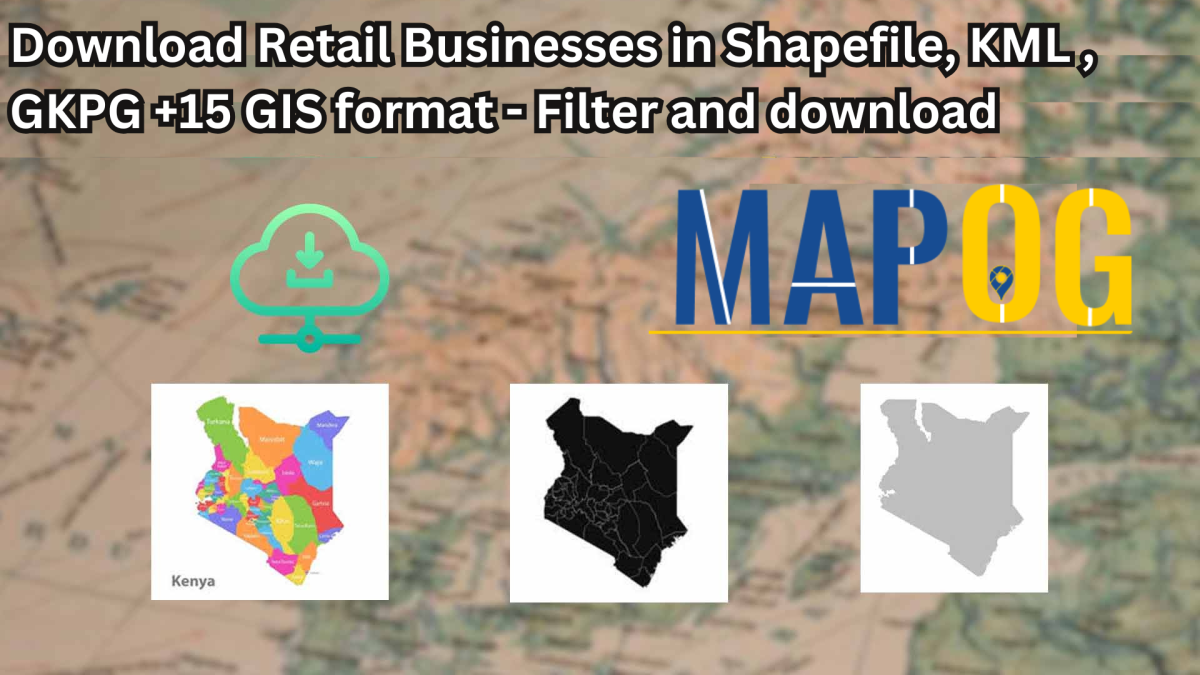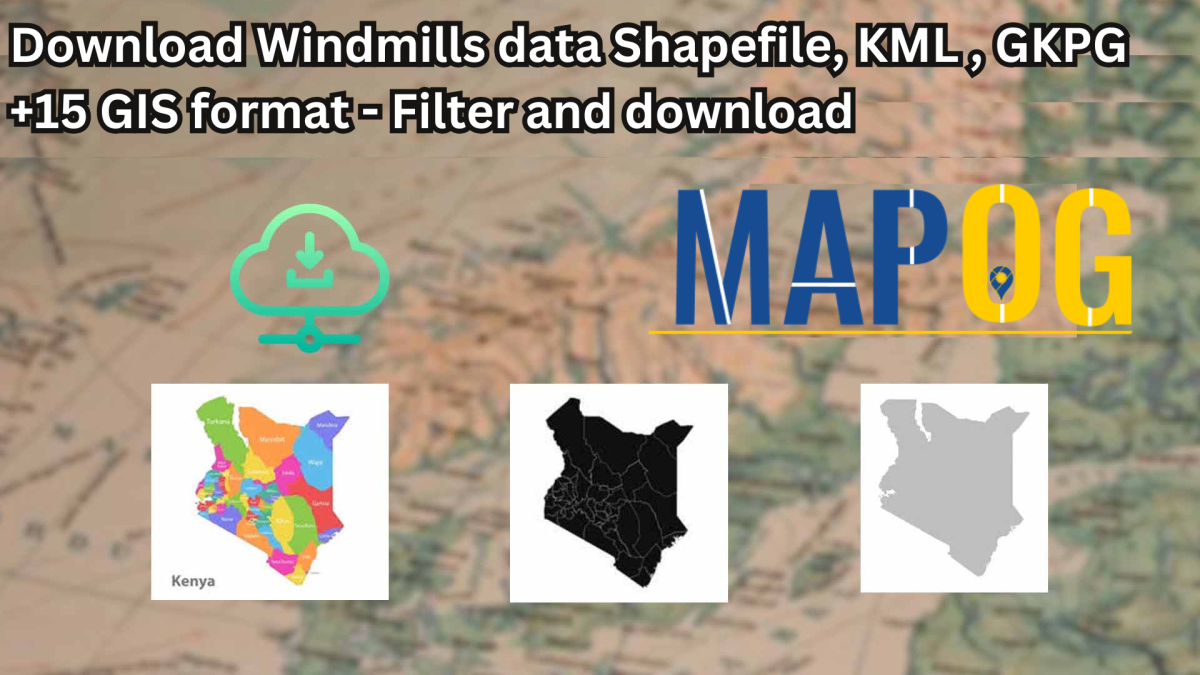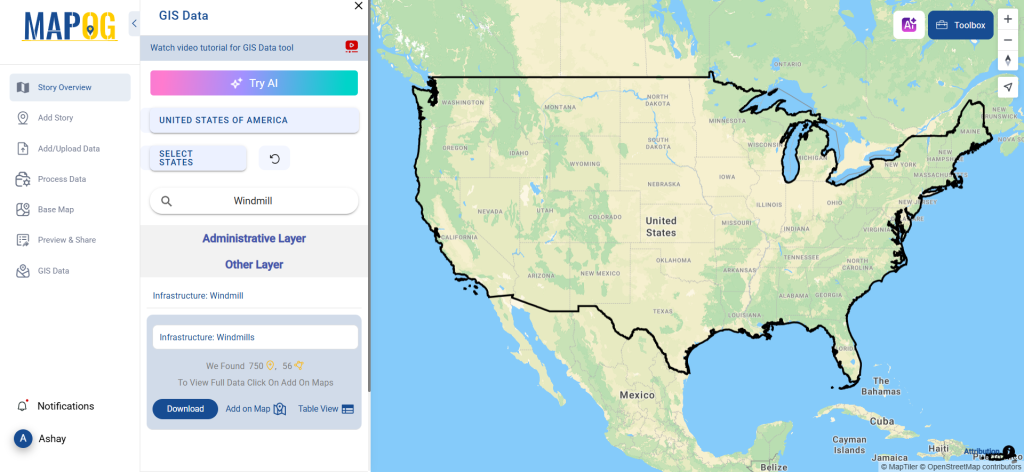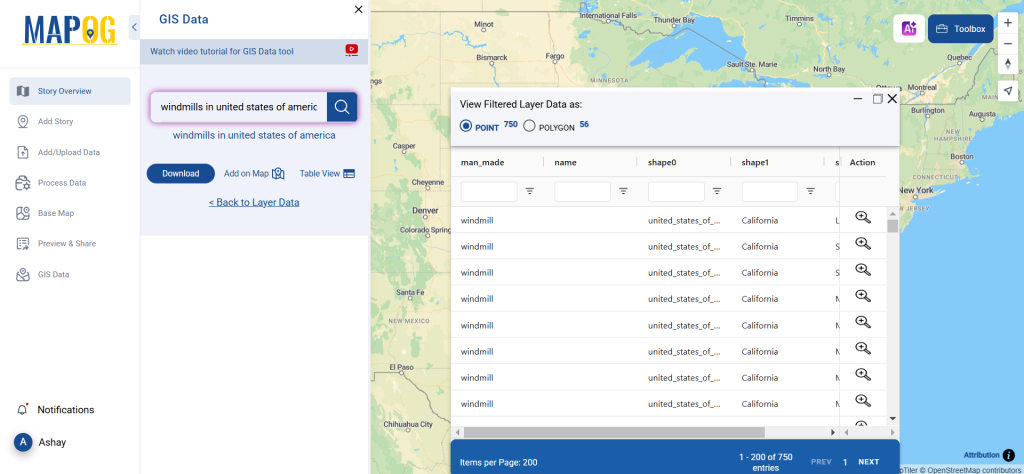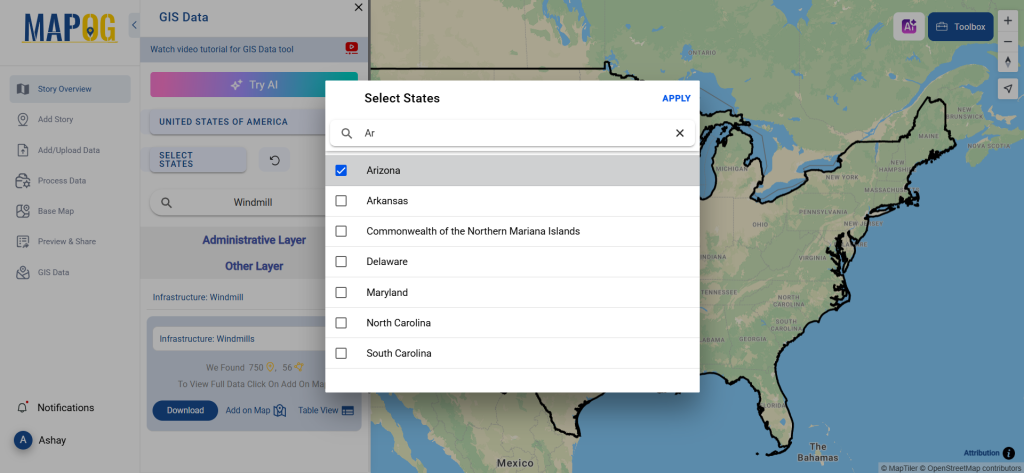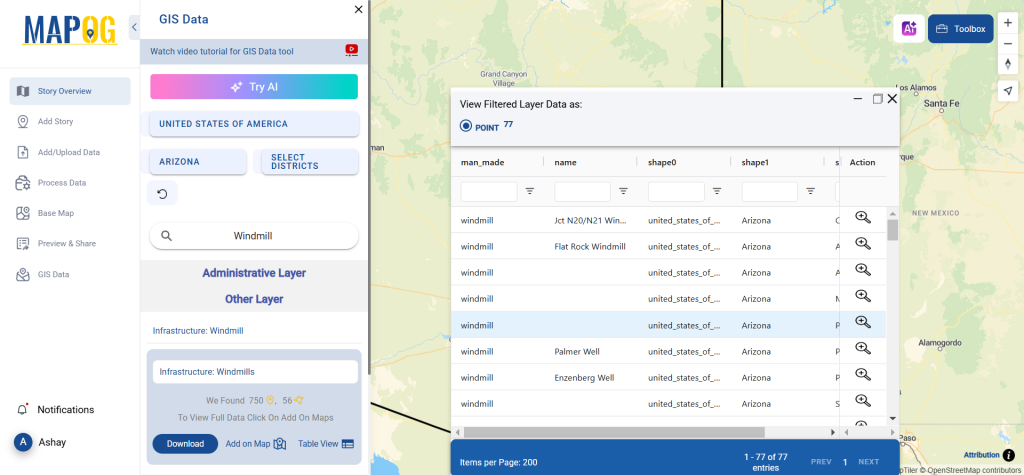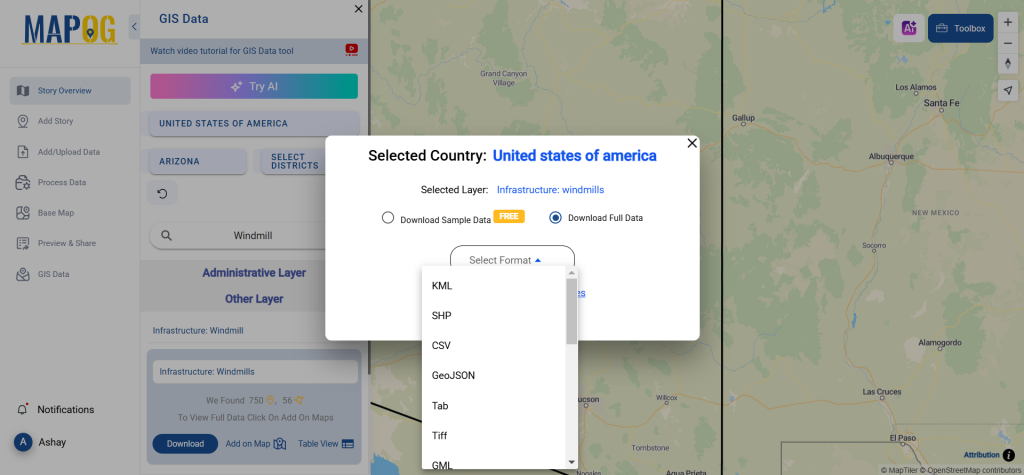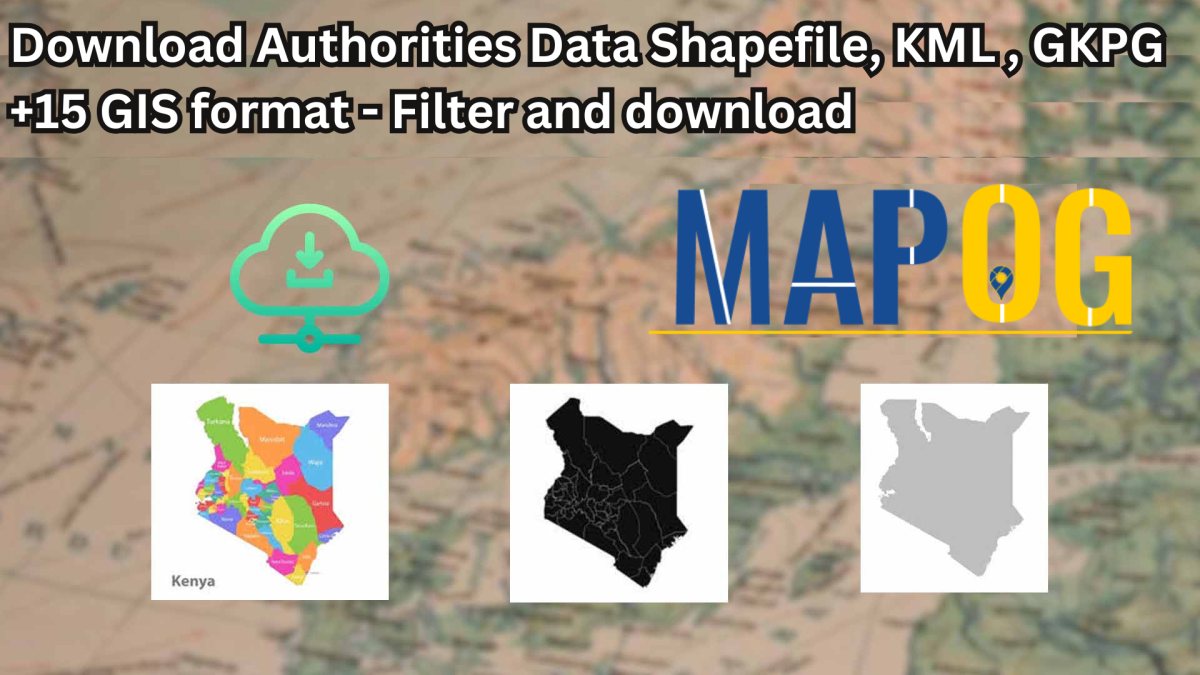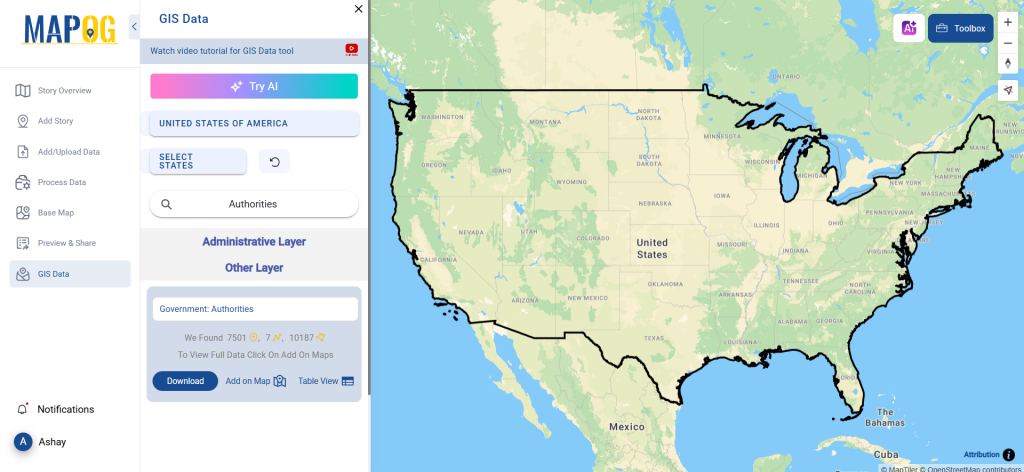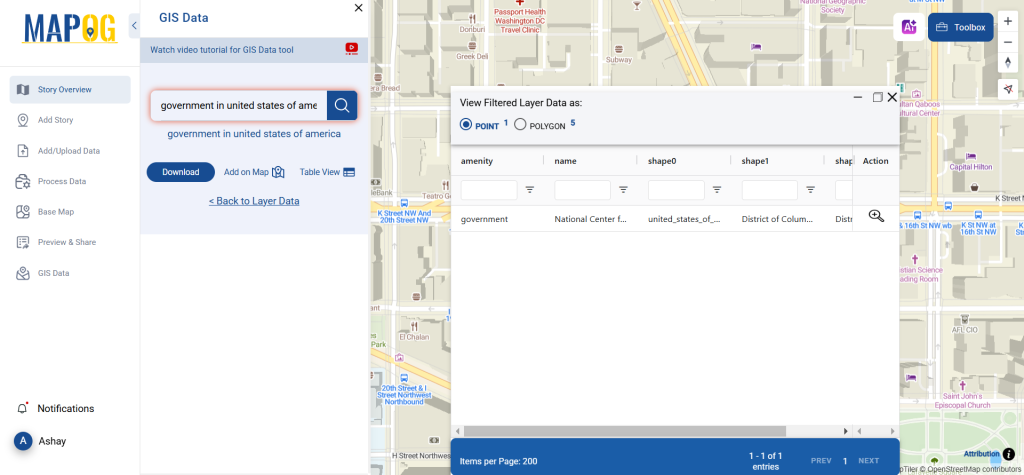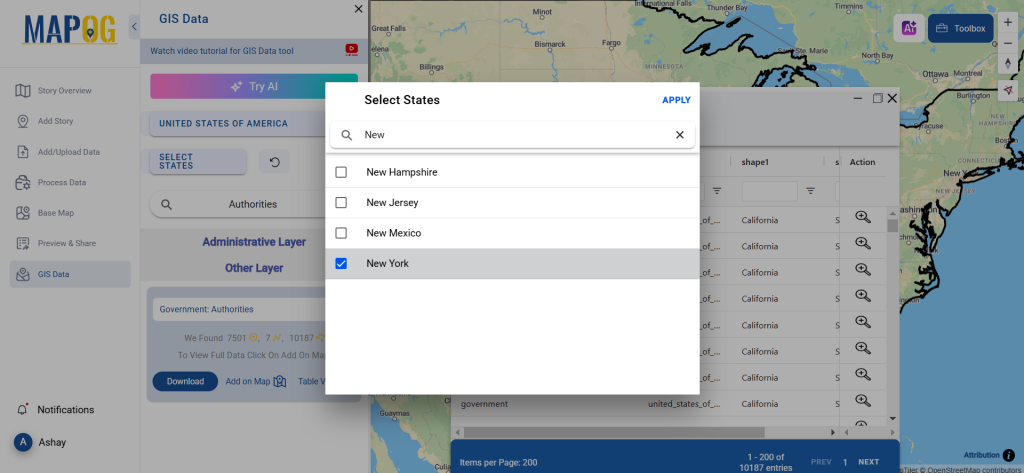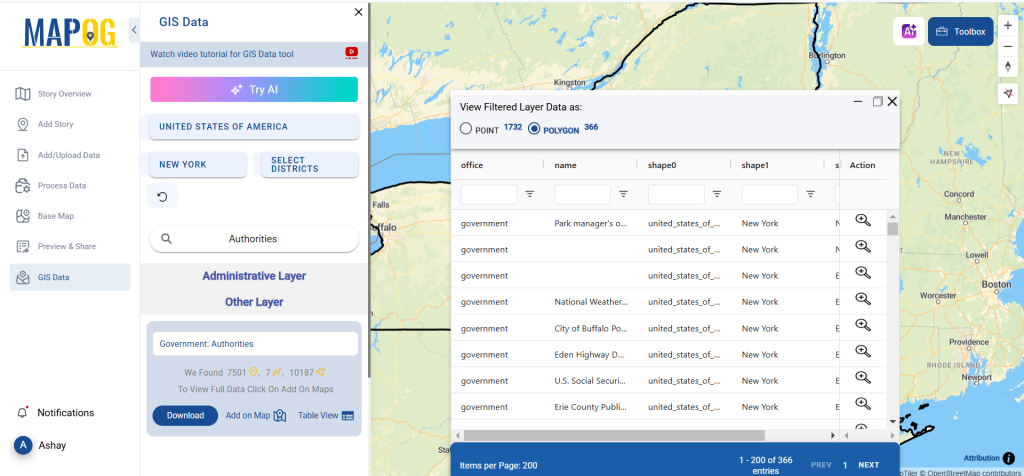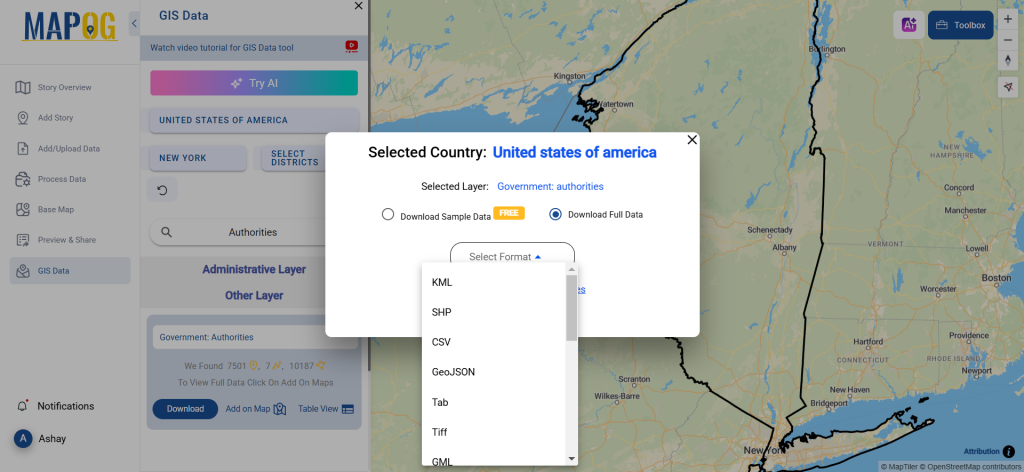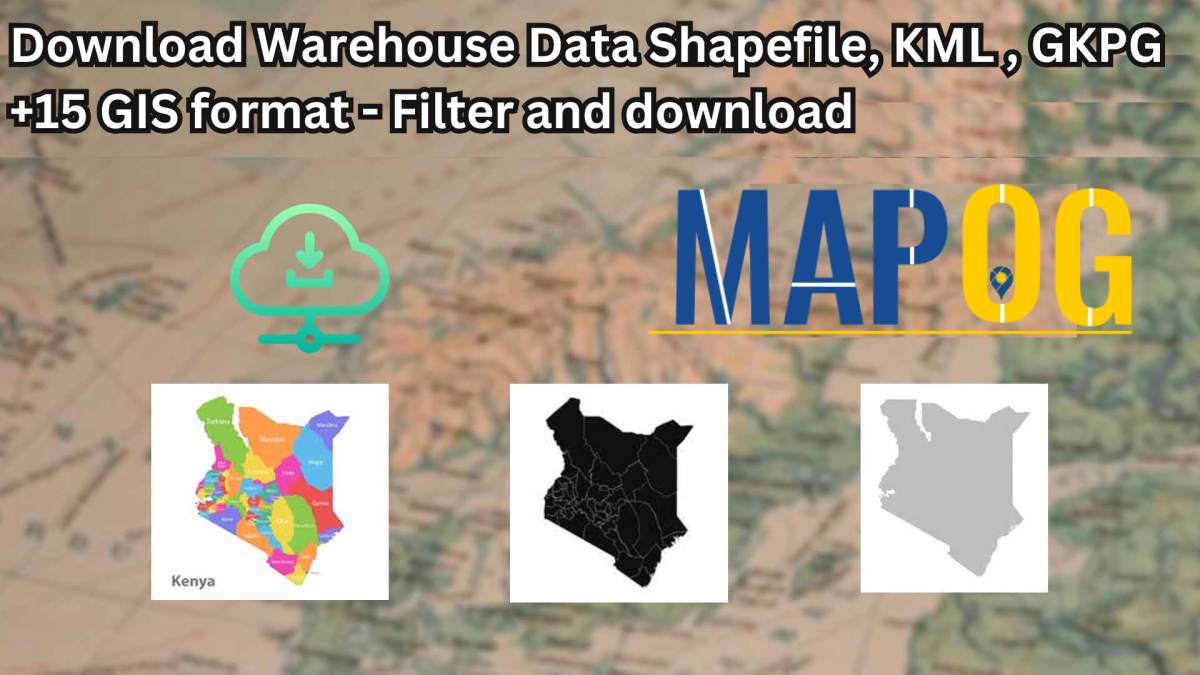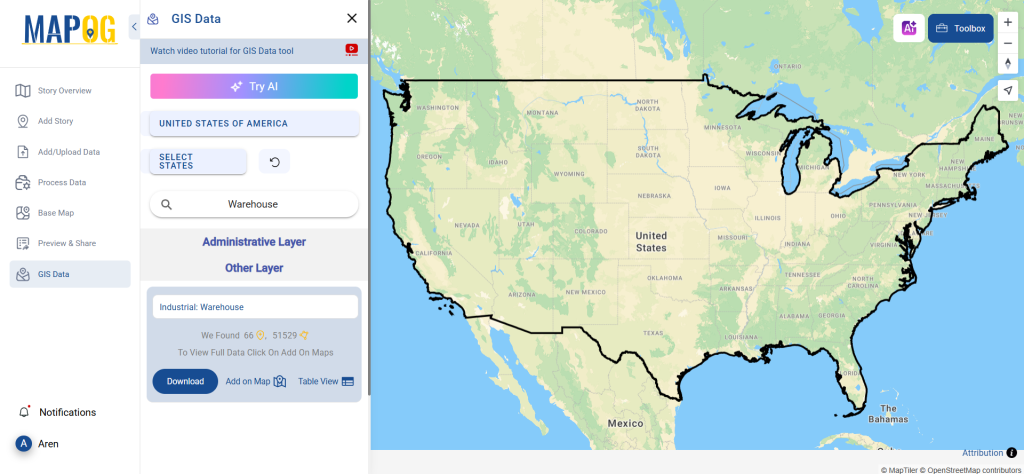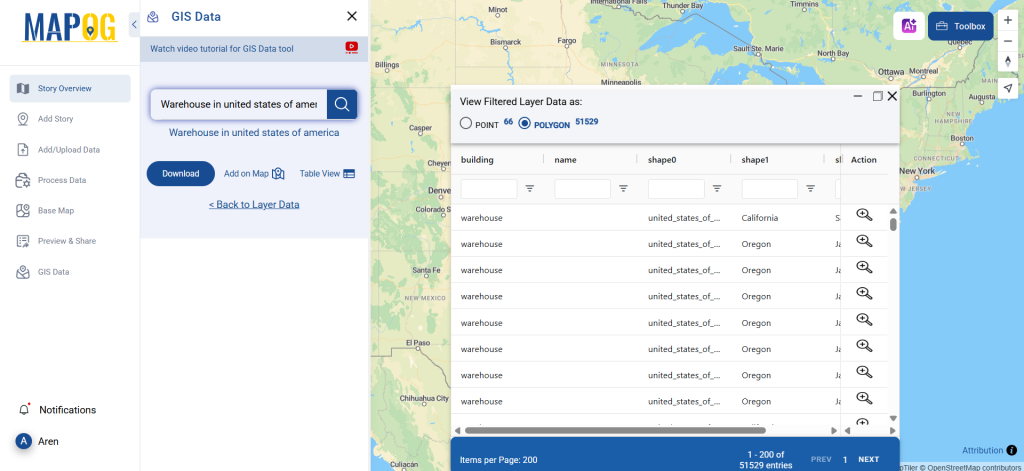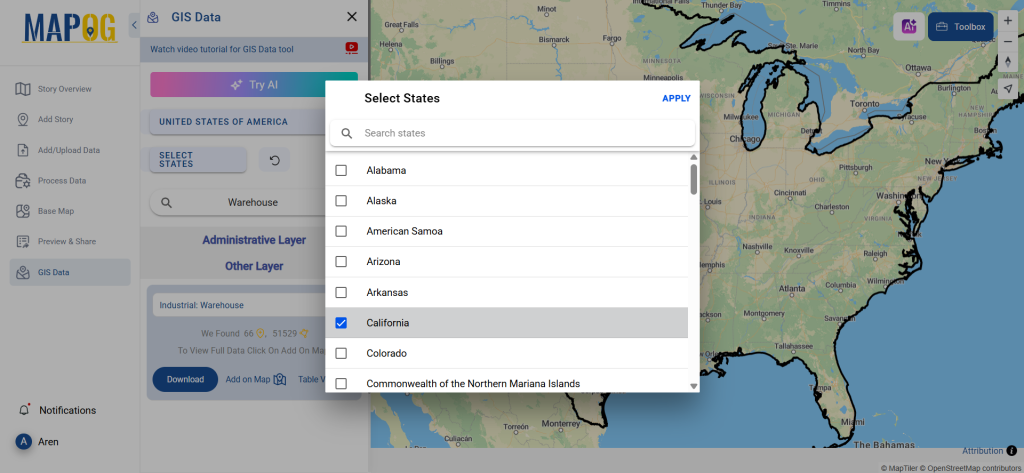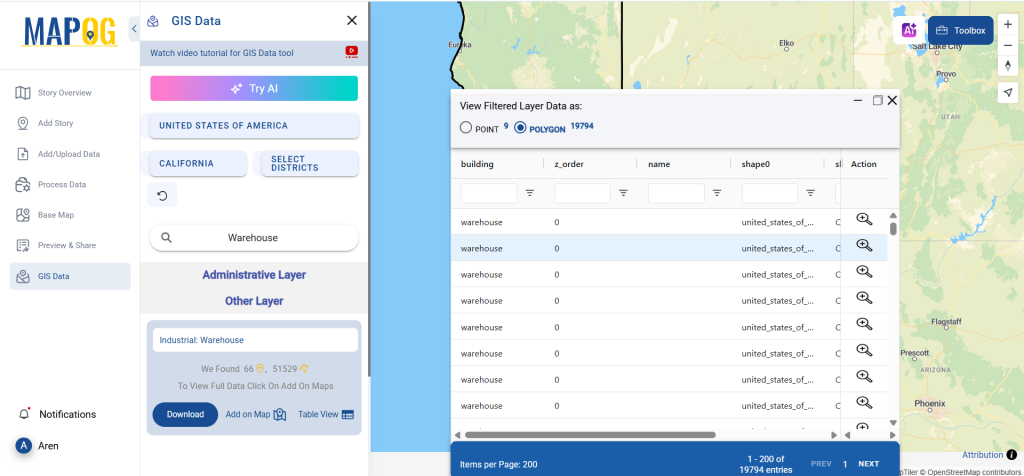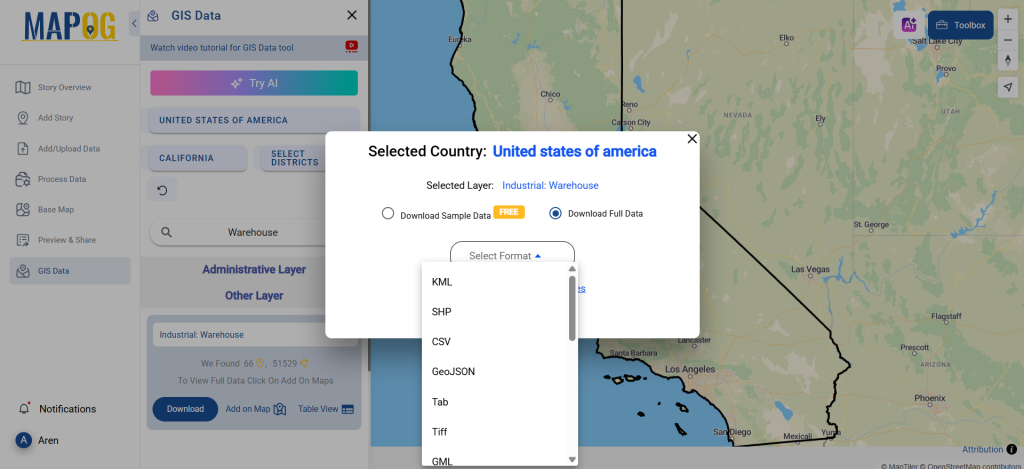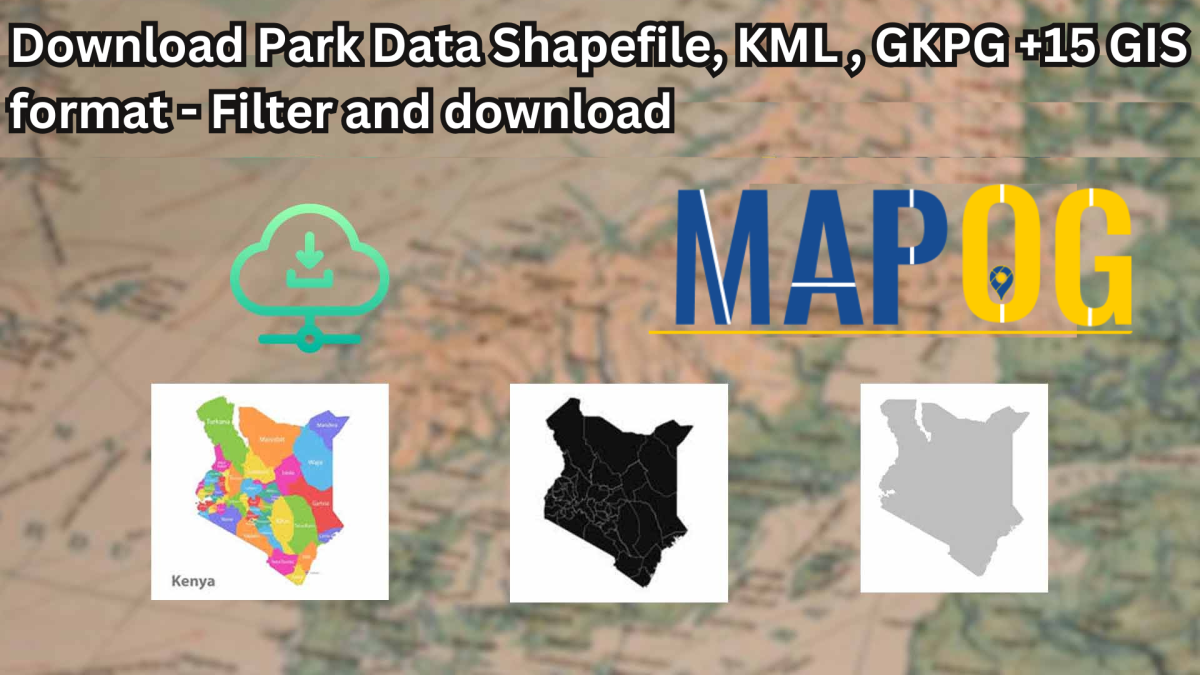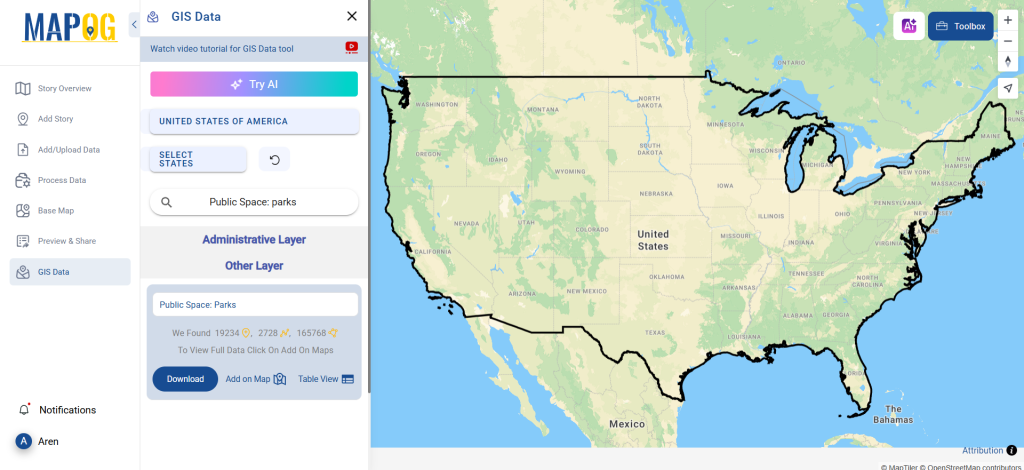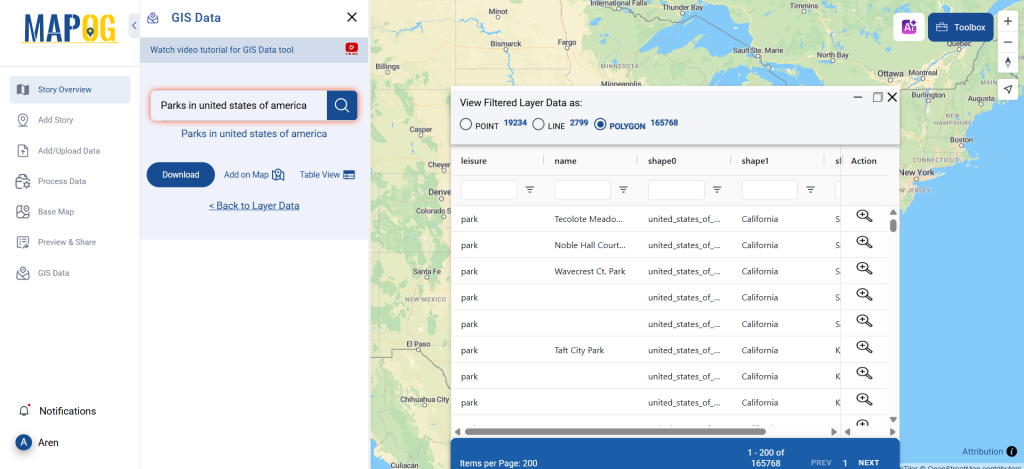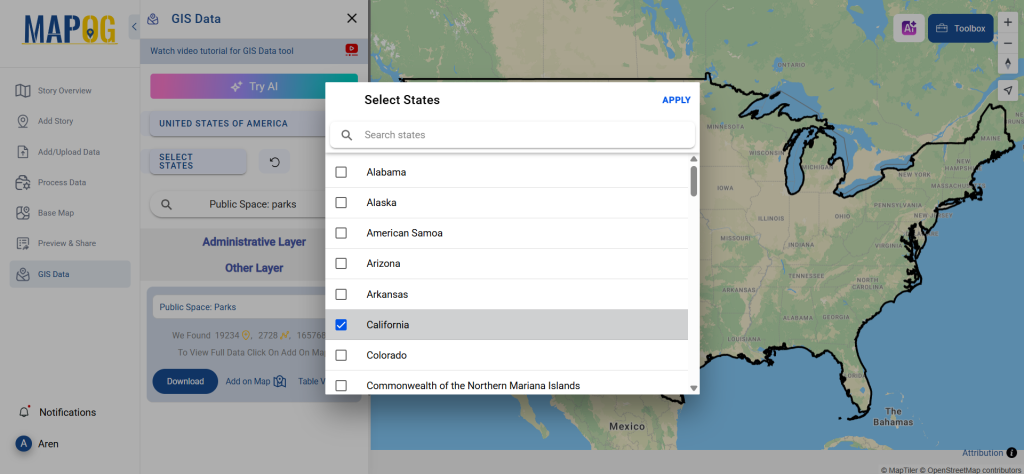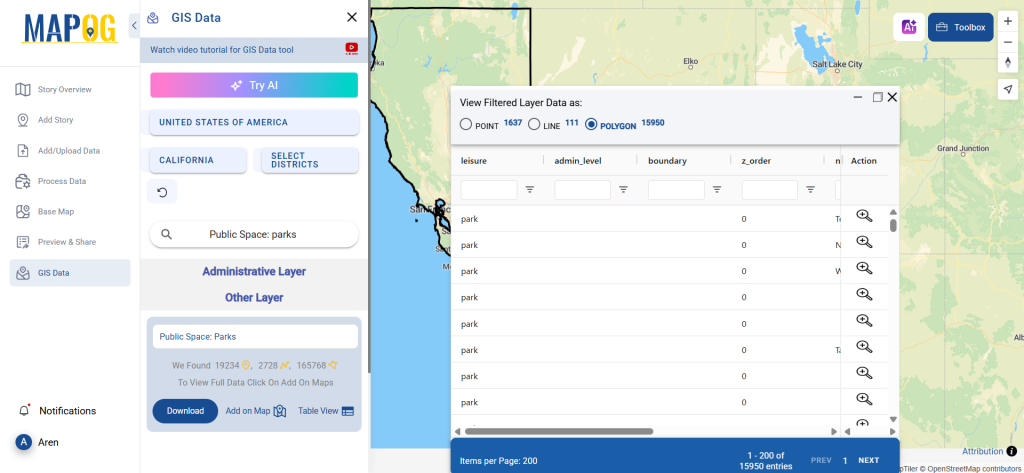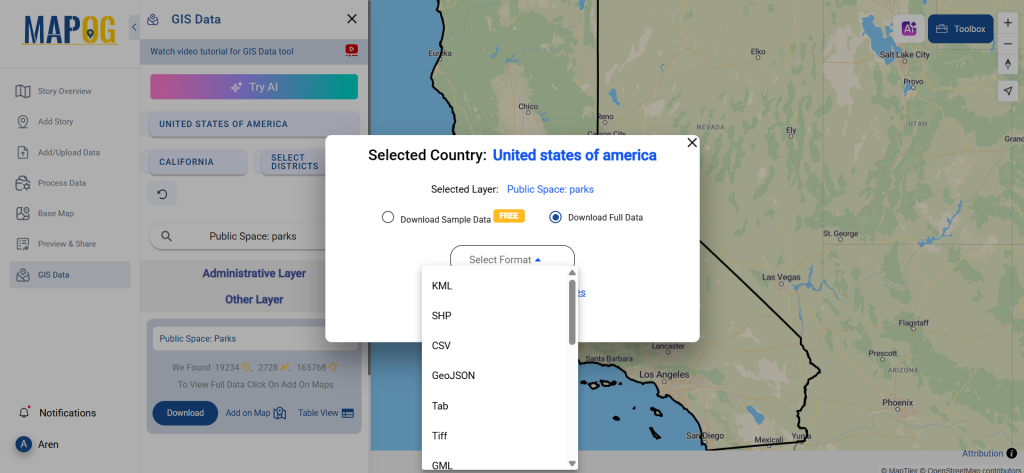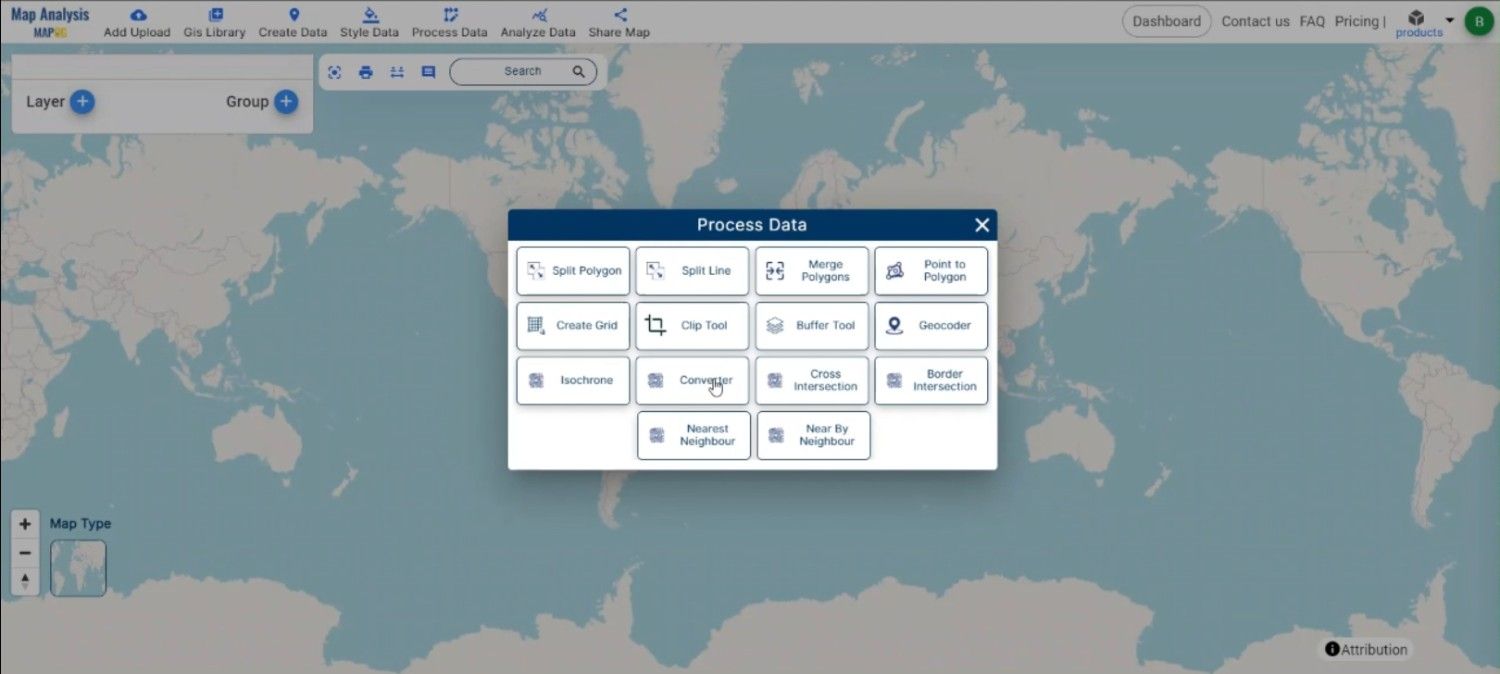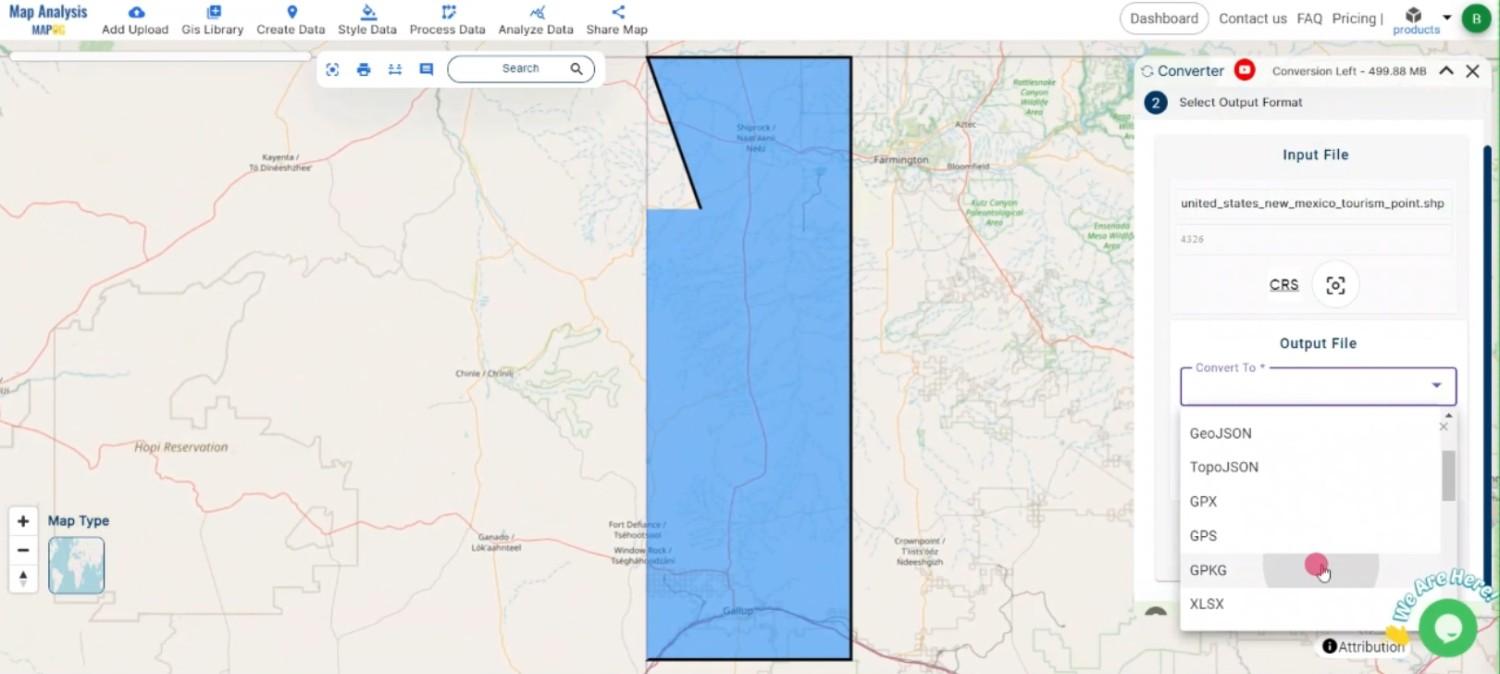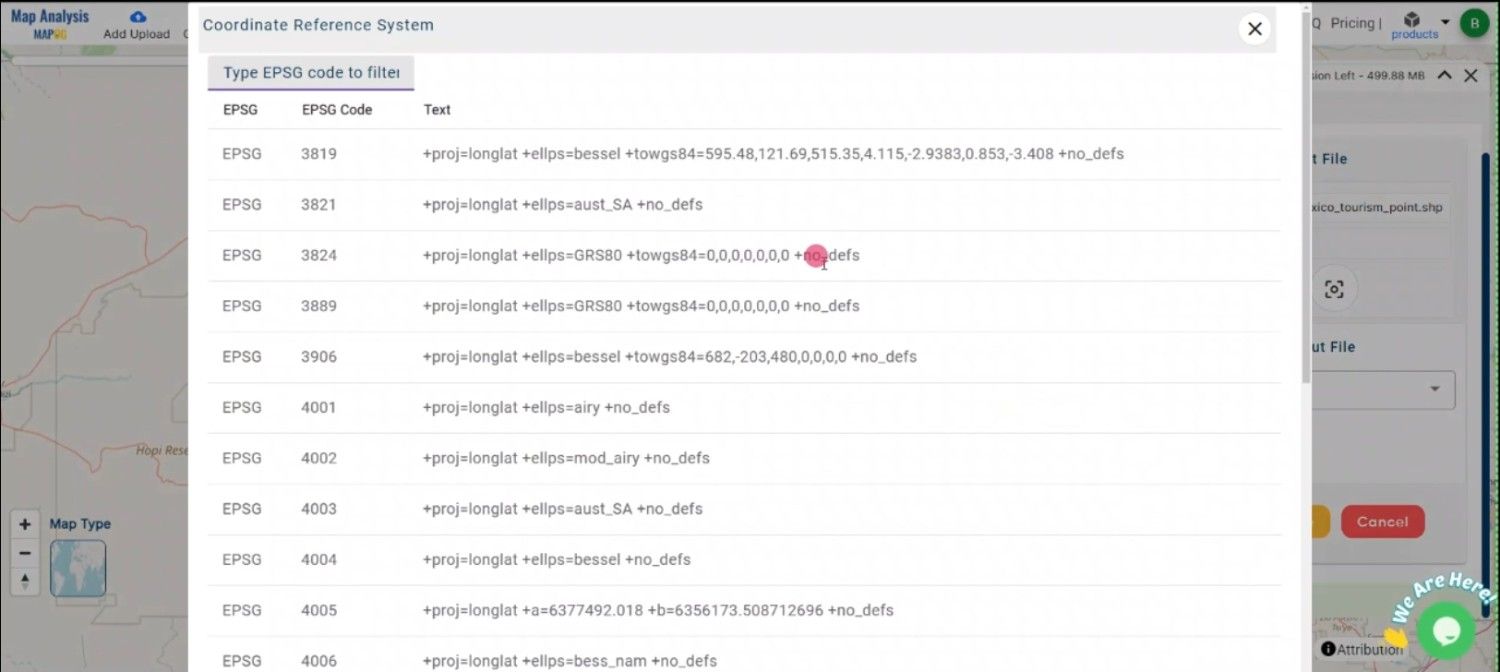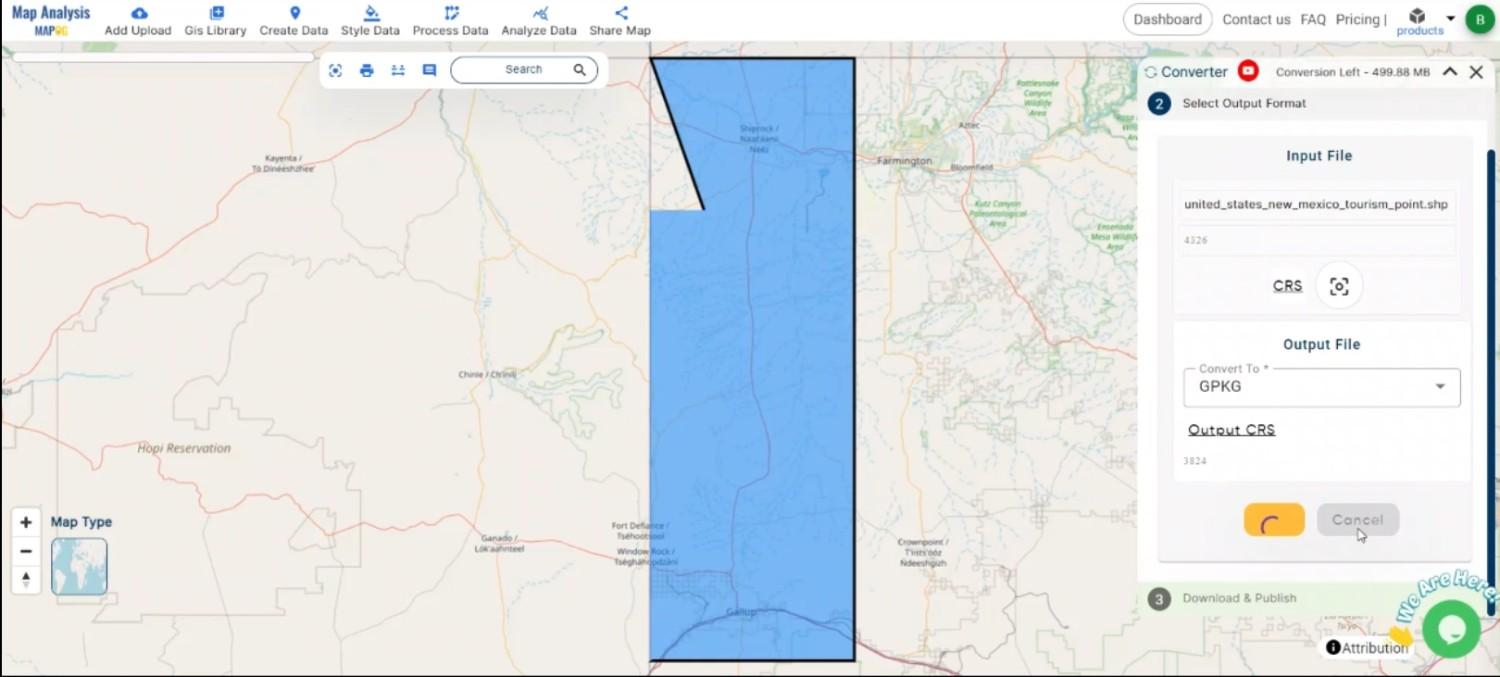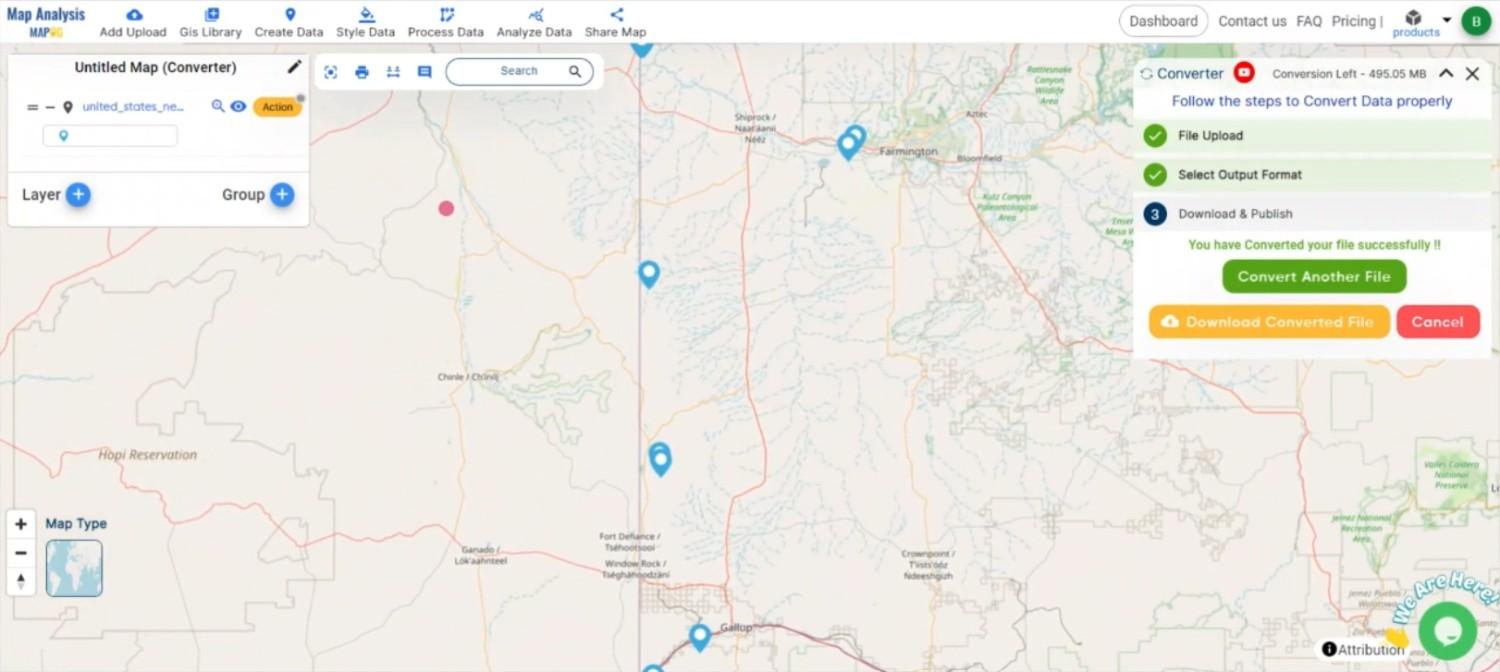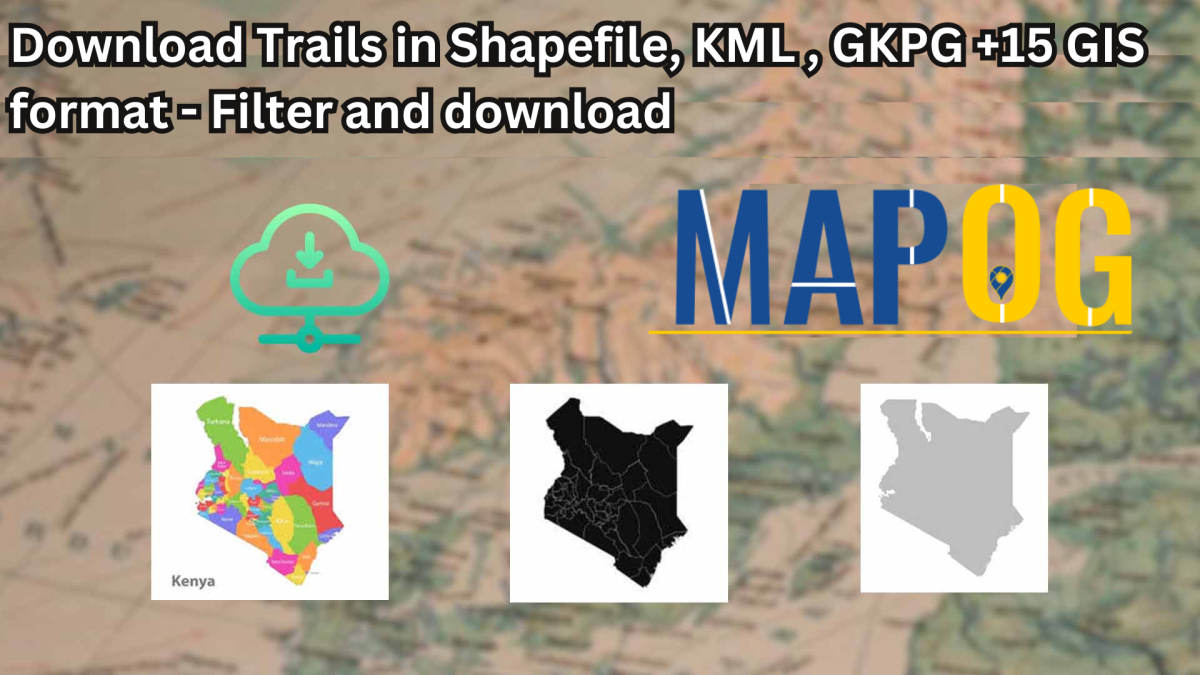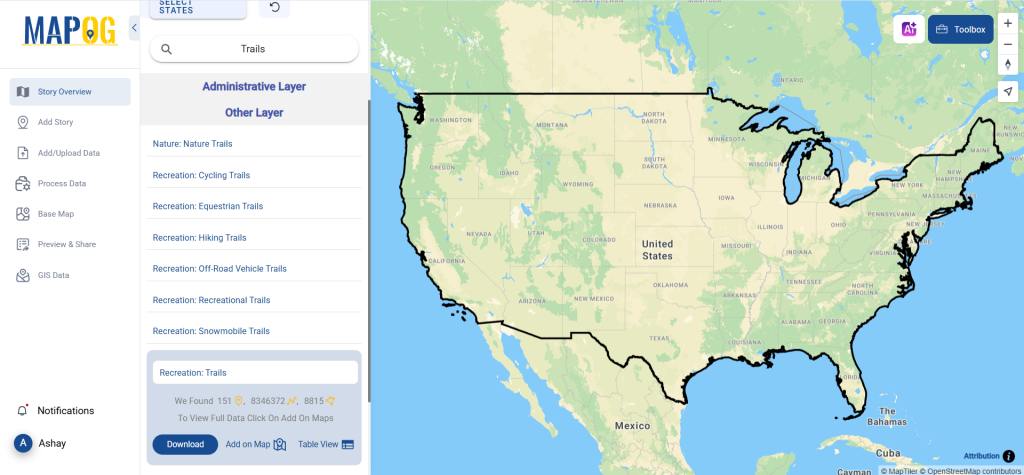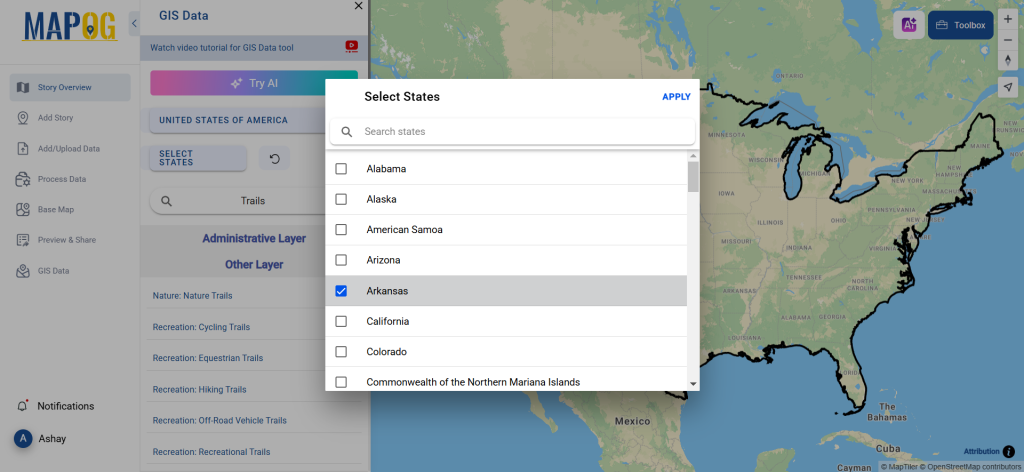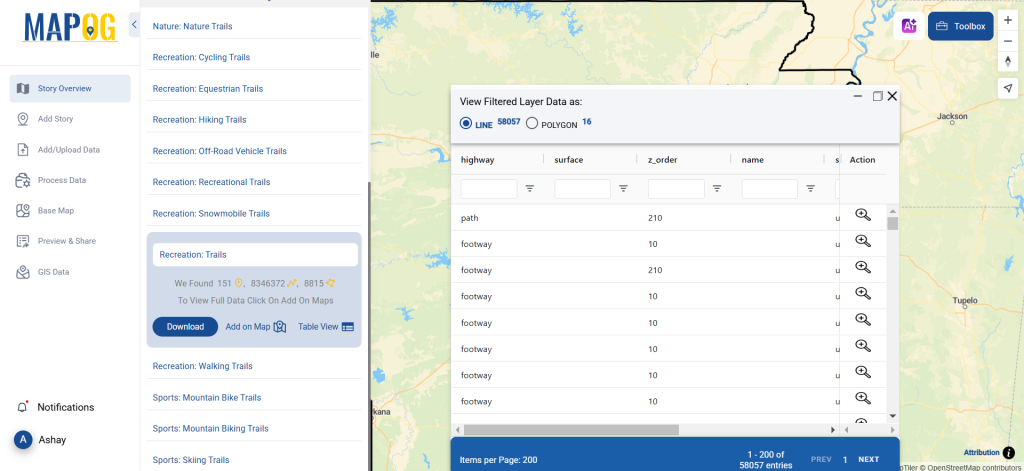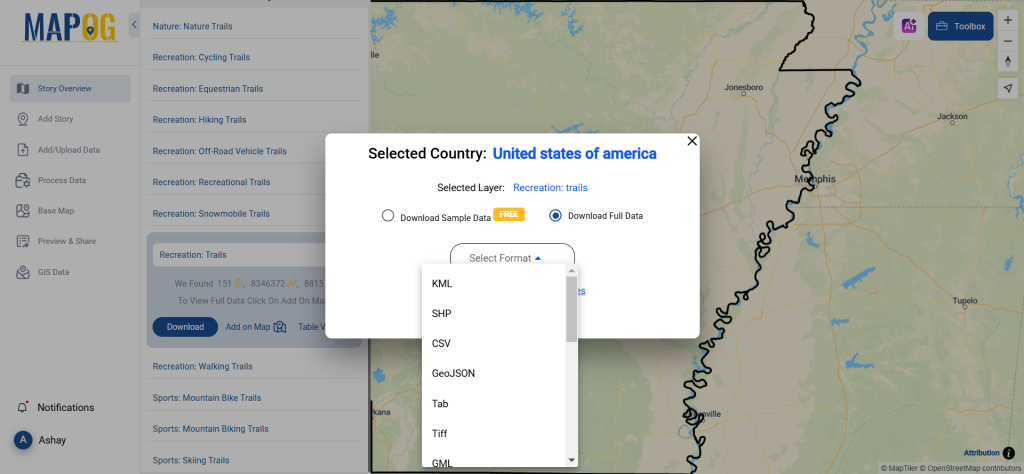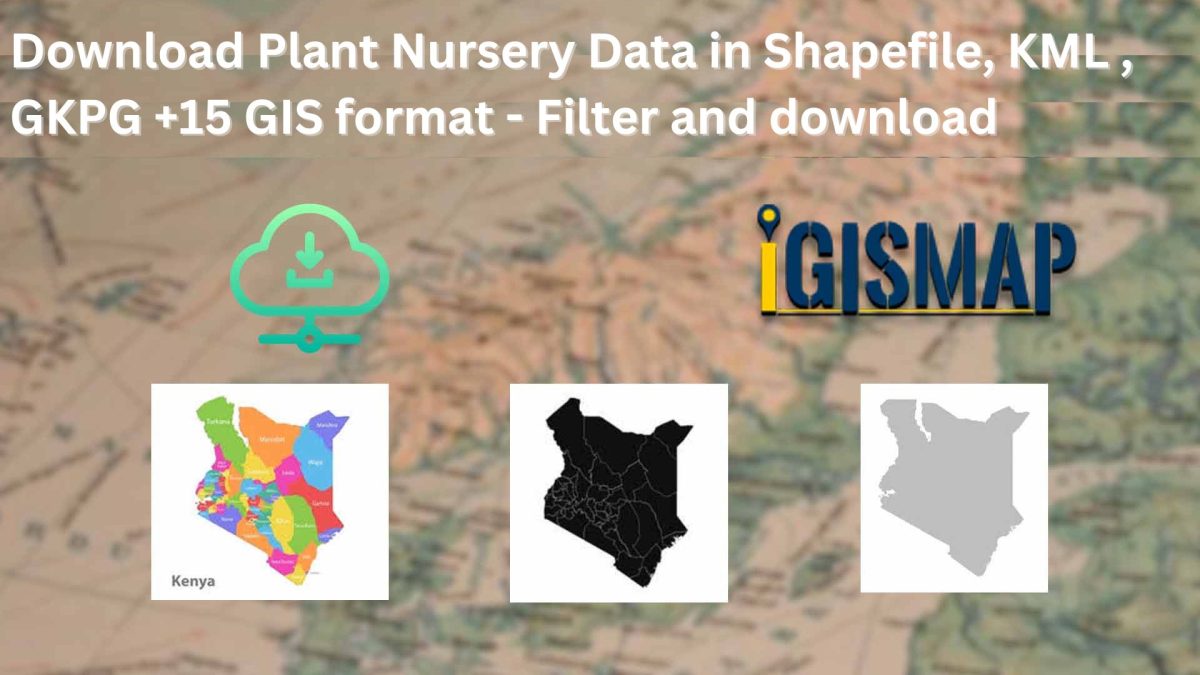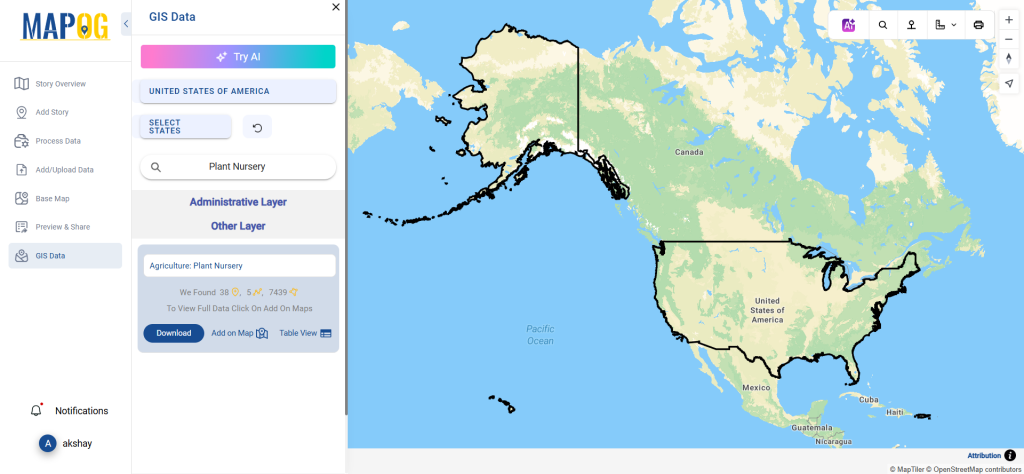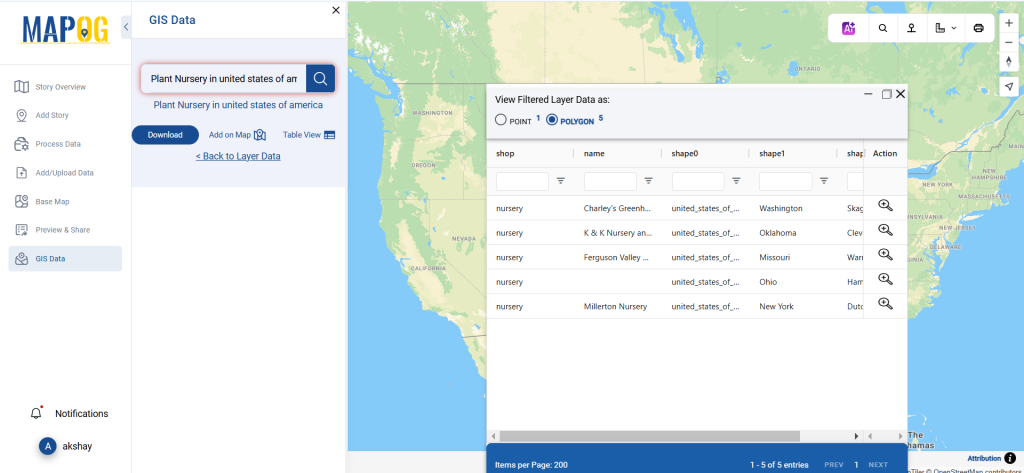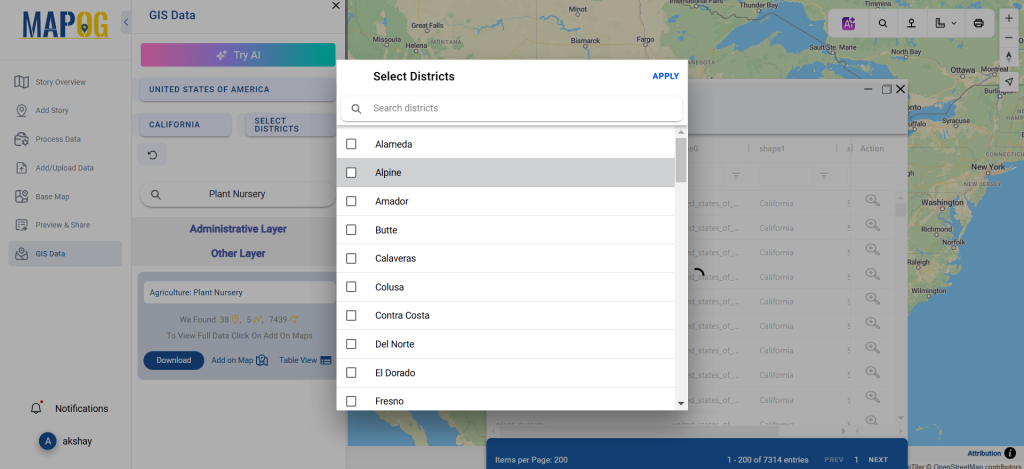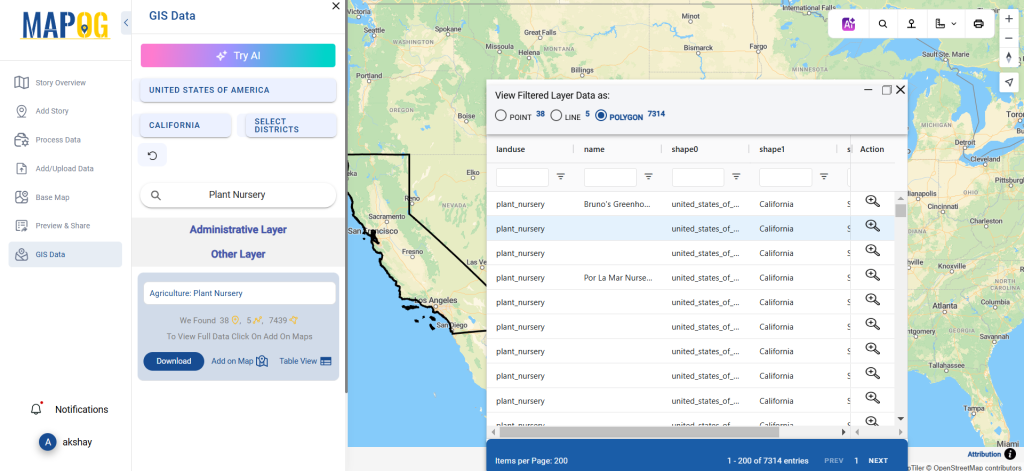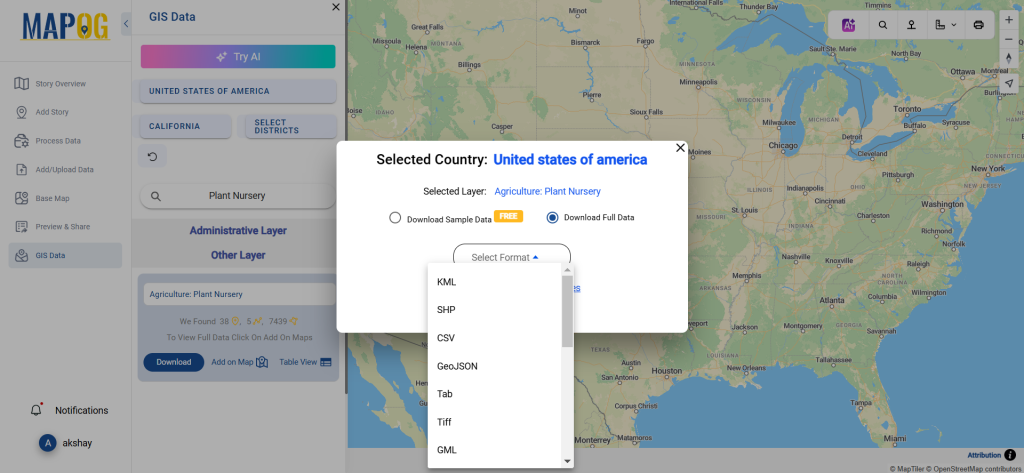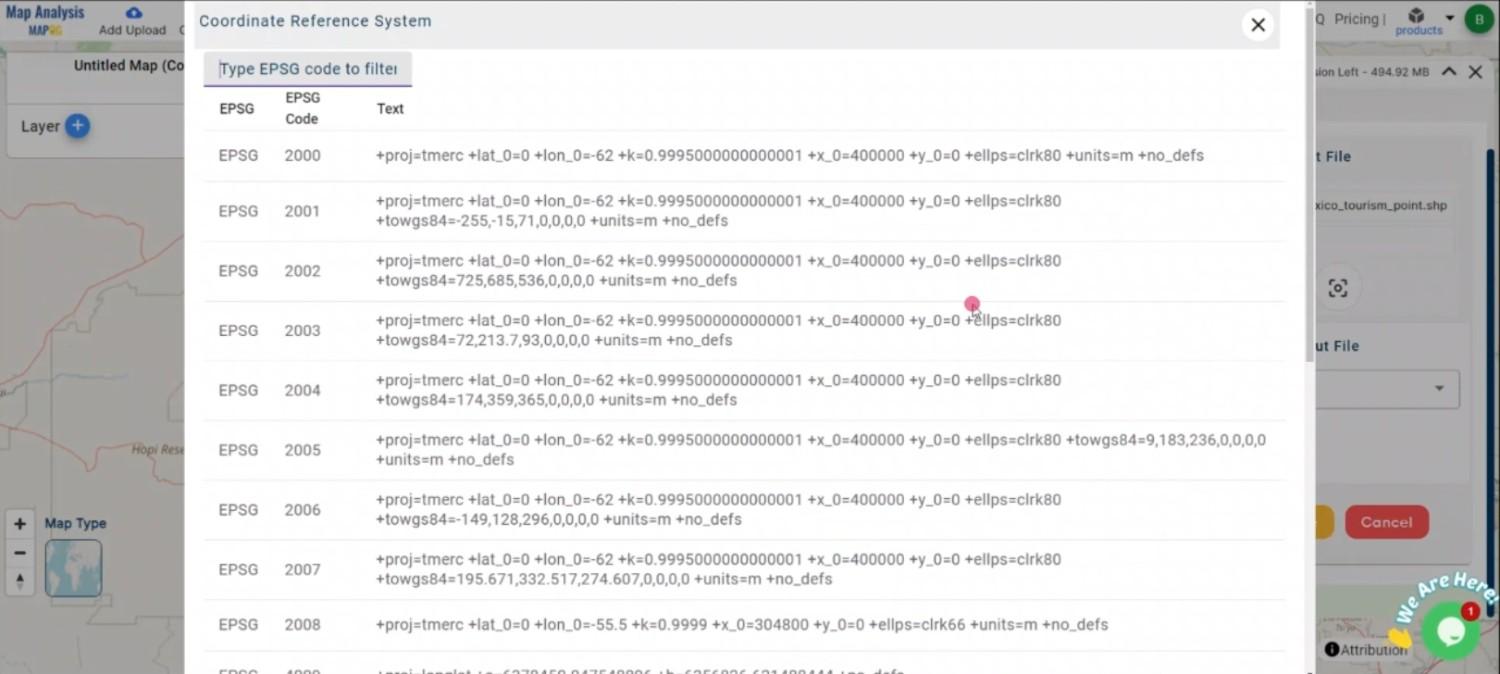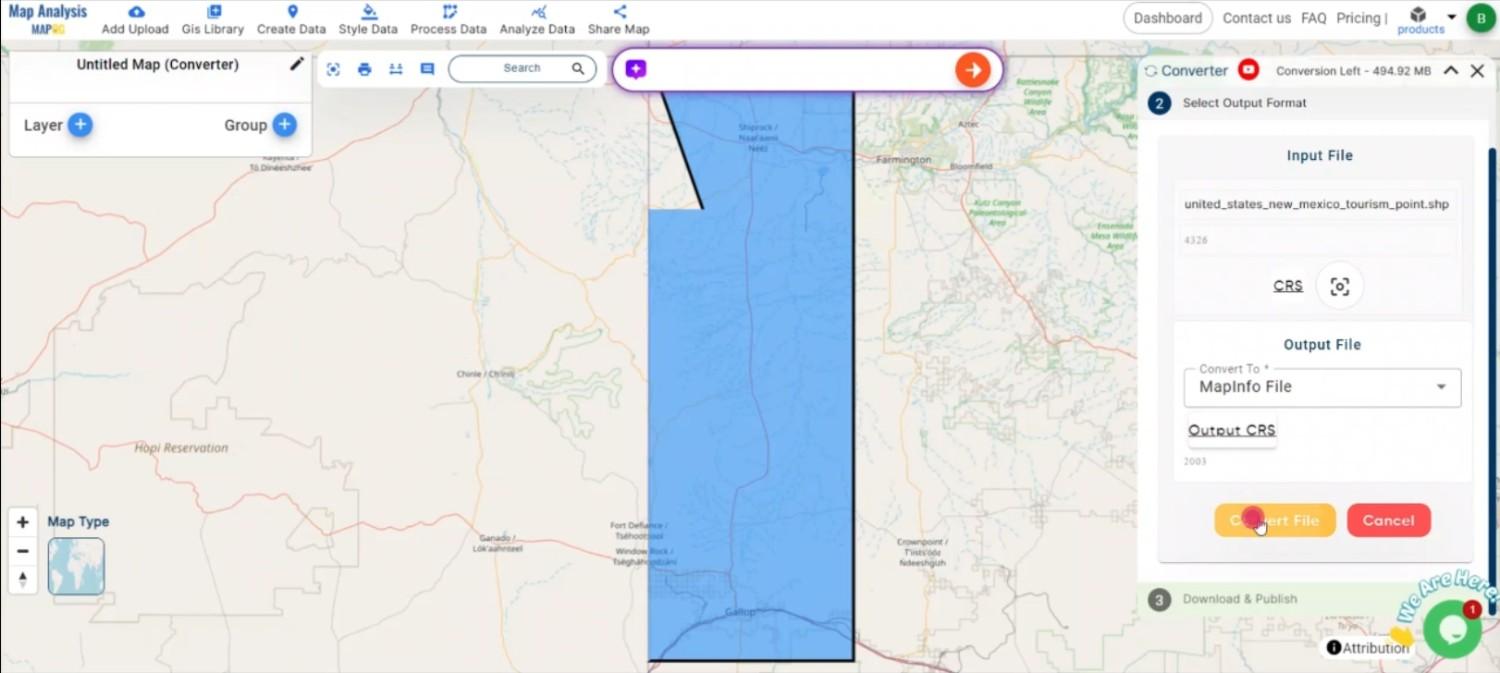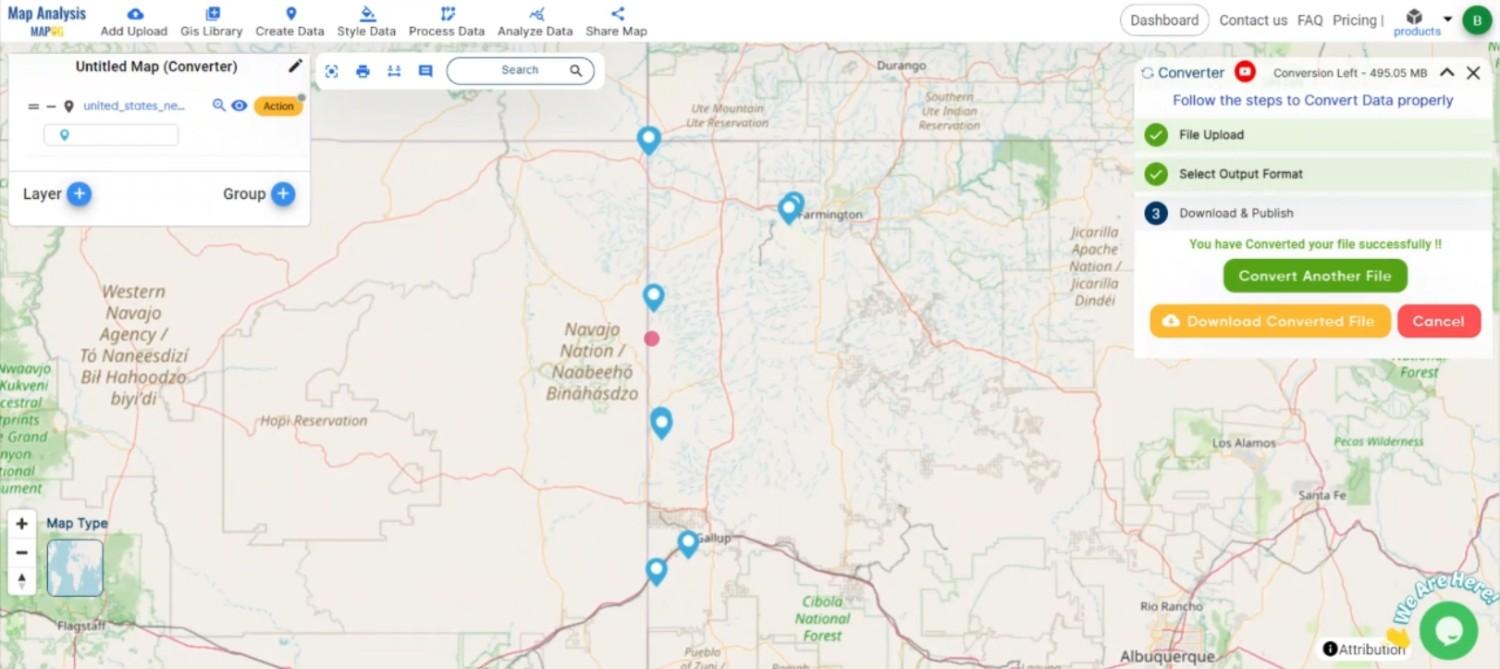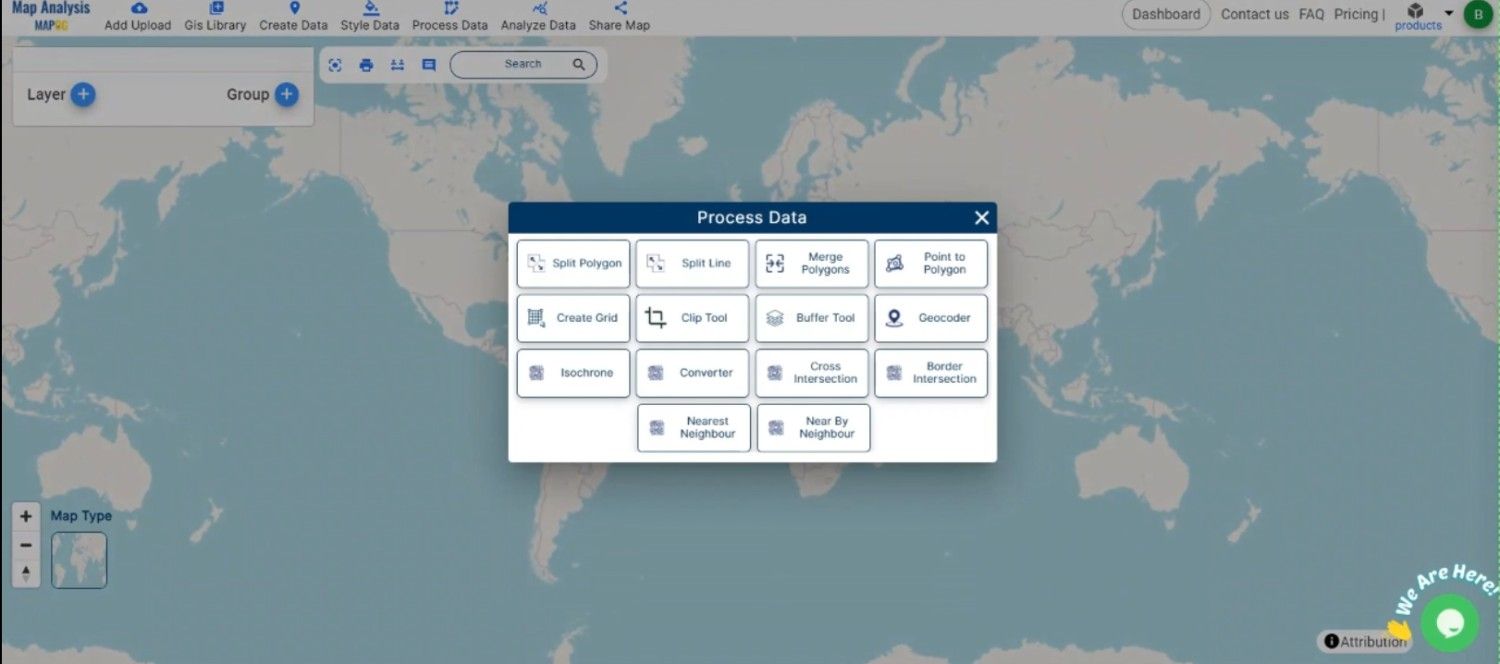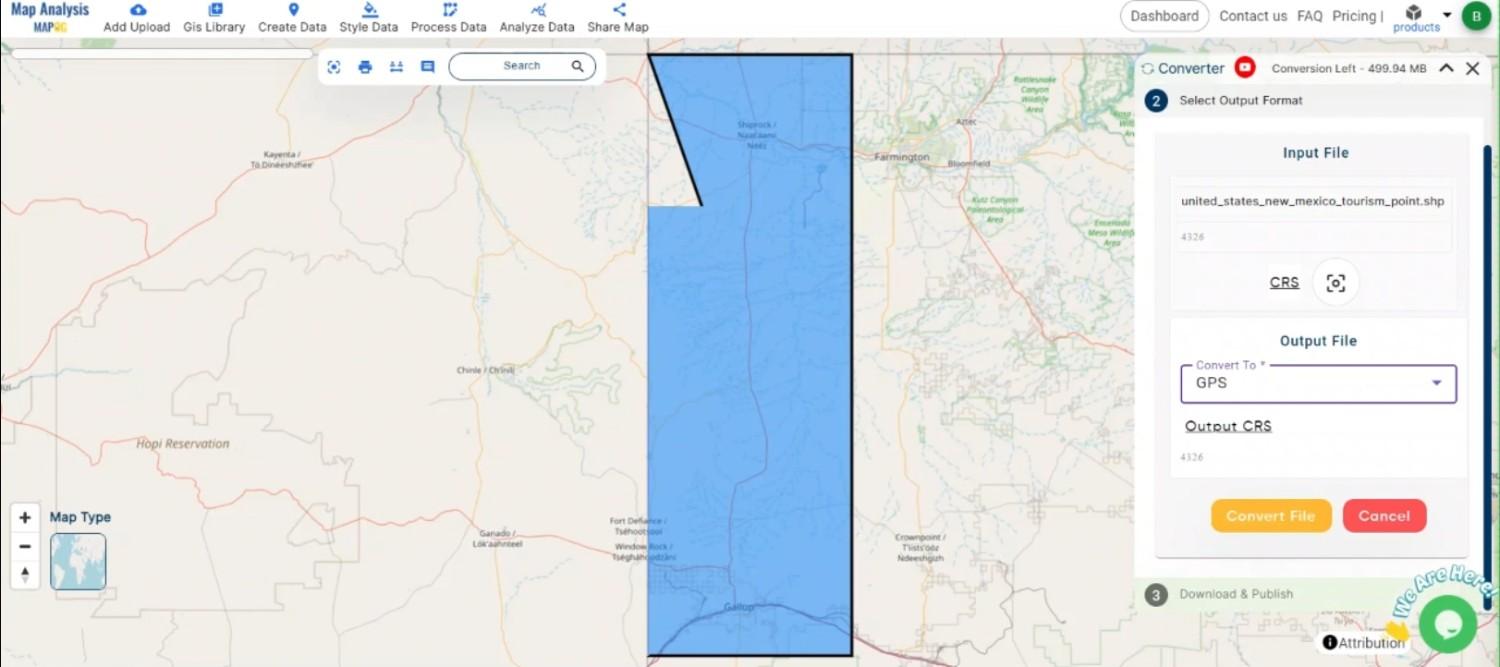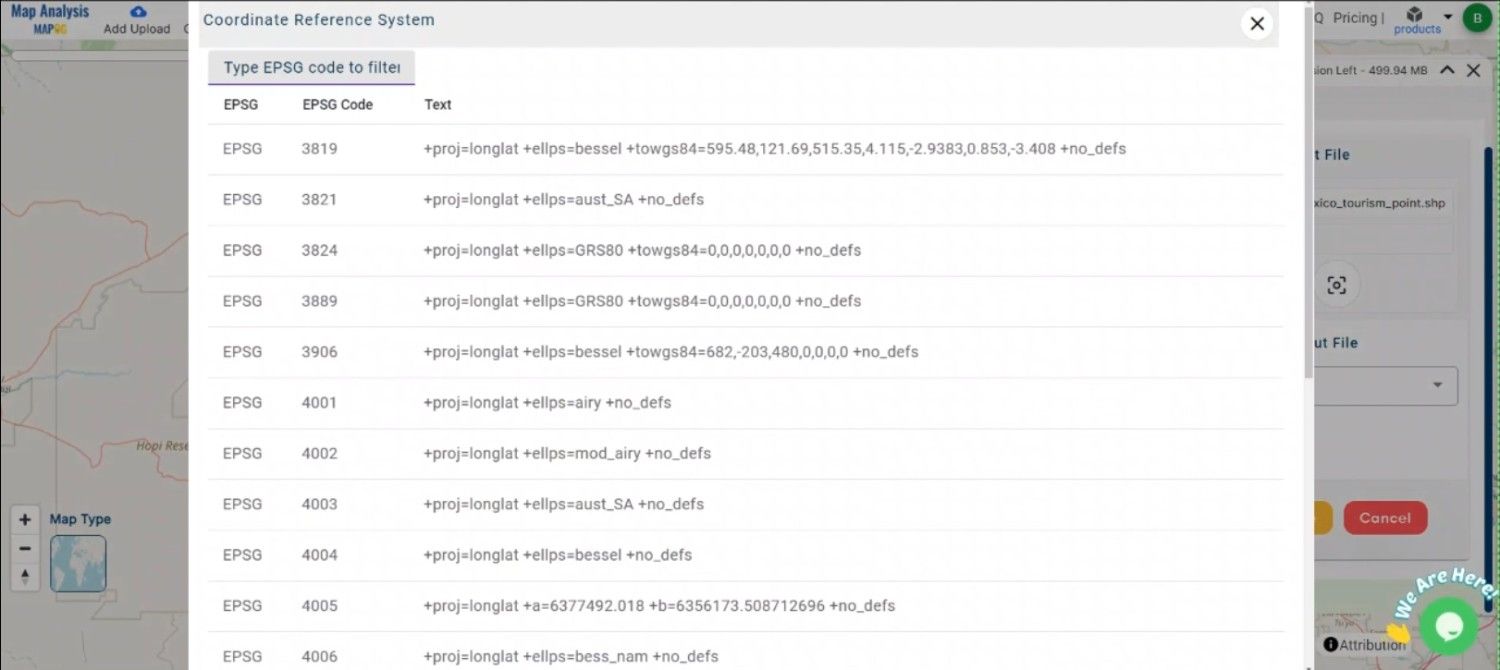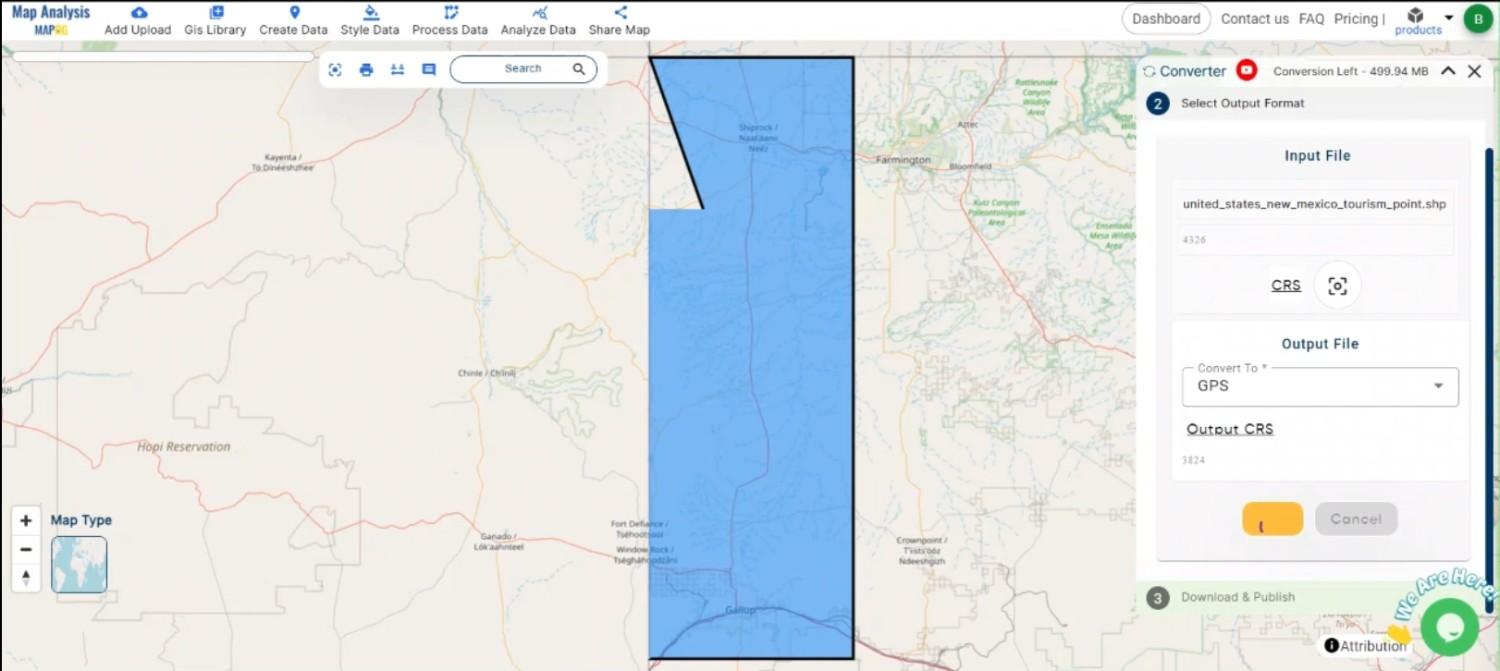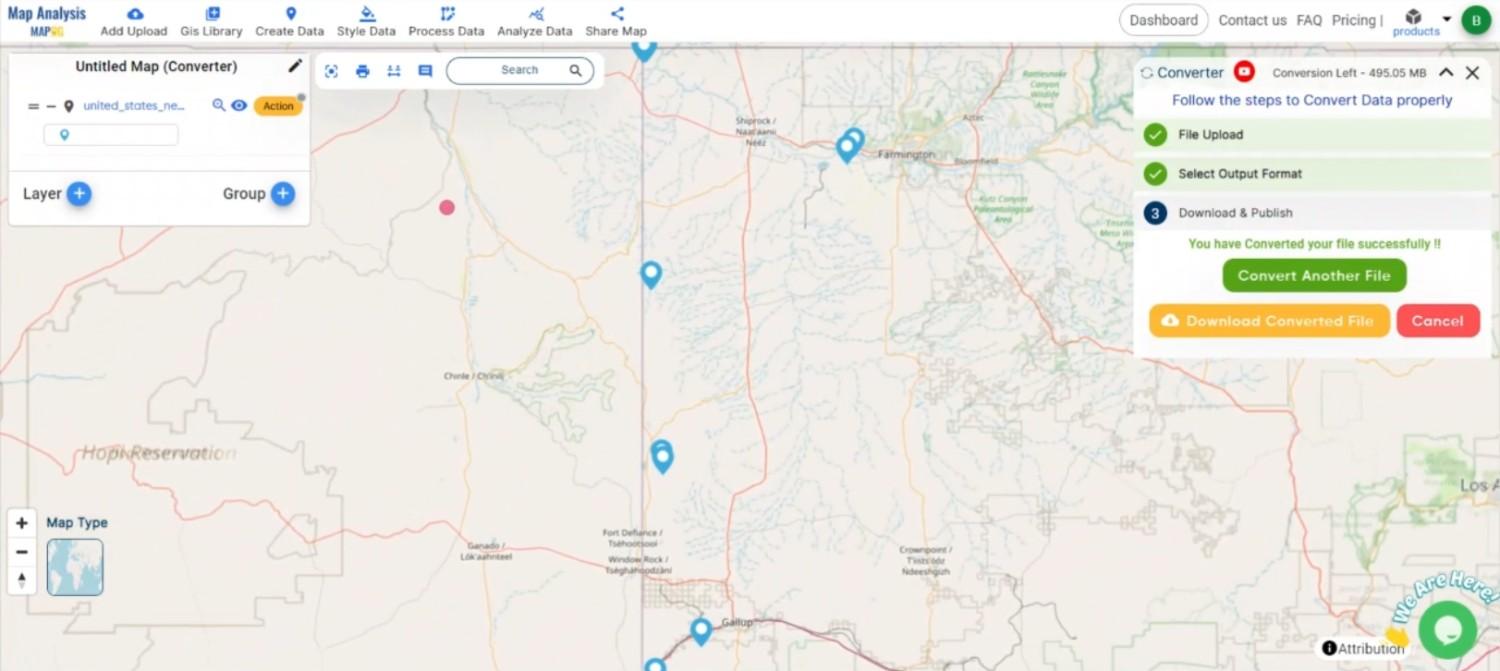GIS Data by MAPOG is a user-friendly platform designed to help users download retail businesses data in multiple GIS formats, including Shapefile, KML, GeoJSON, and more. It offers a seamless way to access administrative and geographic data sets, making detailed mapping and business analysis easier than ever. Whether you need retail business locations, store distribution, or market insights, this tool provides accurate and up-to-date data across the globe.
How to Download Retail Businesses Data?
MAPOG makes the process effortless with an easy-to-follow guide. With over 900+ layers available, users can choose from an extensive array of formats, including Shapefile, KML, and GeoJSON, ensuring compatibility with various GIS applications.
Download Retail Businesses data of any countries
Note:
- All data is provided in GCS datum EPSG:4326 WGS84 CRS (Coordinate Reference System).
- Users need to log in to access and download their preferred data formats.
Step-by-Step Guide to Download Retail Businesses Data
Step 1: Search for Retail Businesses Data
Log in to the GIS Data platform and select the desired country. Use the search bar to find “Retail Businesses data.” You can explore datasets for shopping centers, supermarkets, malls, and other retail establishments. The platform also provides attribute details, such as business names, types, and locations.

Step 2: Use the AI Search Tool
Leverage the “Try AI” feature in the upper left corner. This intelligent tool helps refine your search by suggesting relevant datasets based on your query. Just enter what you need (e.g., supermarkets in the USA), and the AI tool will find the most suitable data.
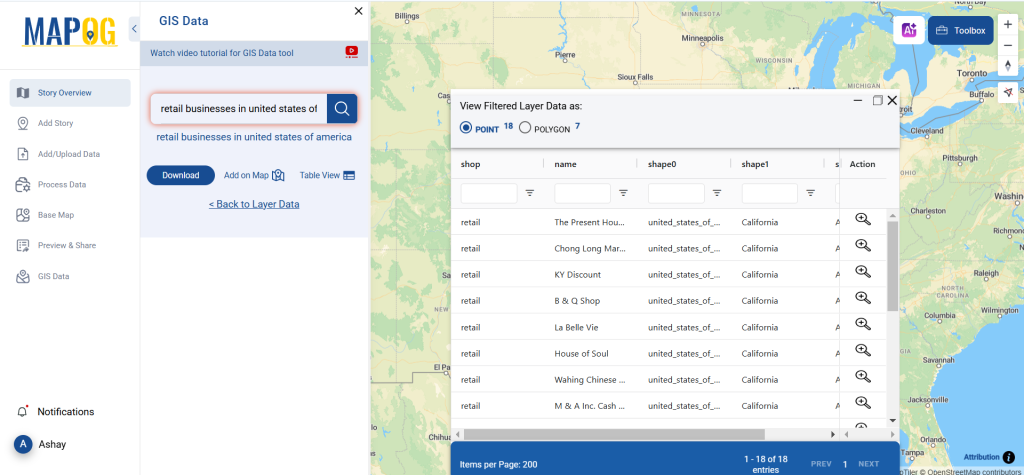
Step 3: Apply Data Filters
To get the most relevant information, use filters to narrow down the search. Users can filter data by state, city, or district, making it easier to extract targeted retail business insights. This feature is highly beneficial for local market analysis and competition tracking.
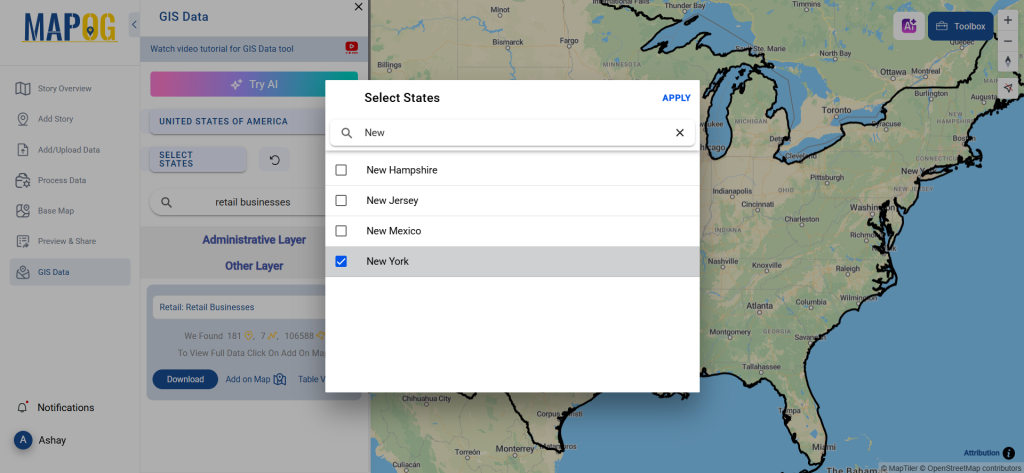
Step 4: Add Data to the Map
With the “Add on Map” feature, users can visualize retail business locations directly on a map. This functionality supports in-depth spatial analysis, helping businesses and analysts identify trends, gaps, and opportunities in various markets.
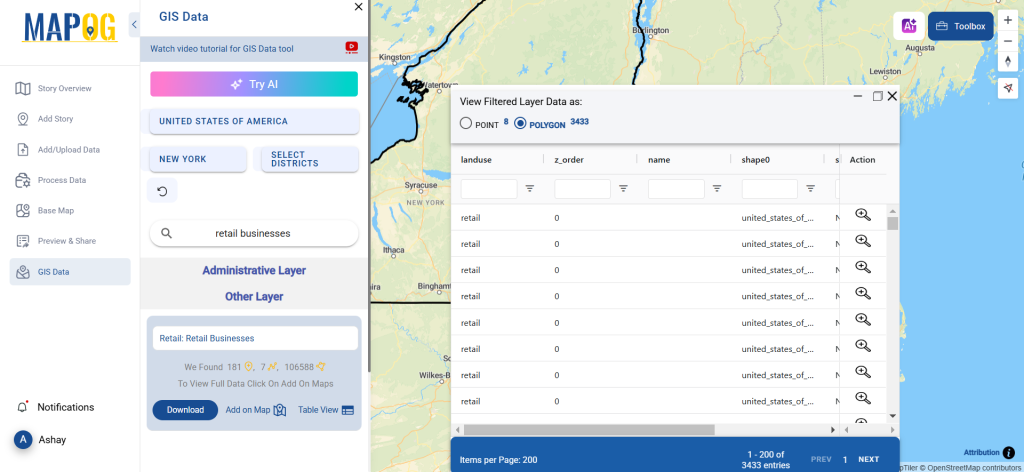
Step 5: Download Data in Desired Format
Click on “Download Data” to get your dataset. Choose between a sample or the full dataset. Select your preferred format, such as Shapefile, KML, MID, GeoJSON, CSV, or any of the 15+ supported formats. Accept the terms and conditions, then proceed with the download.
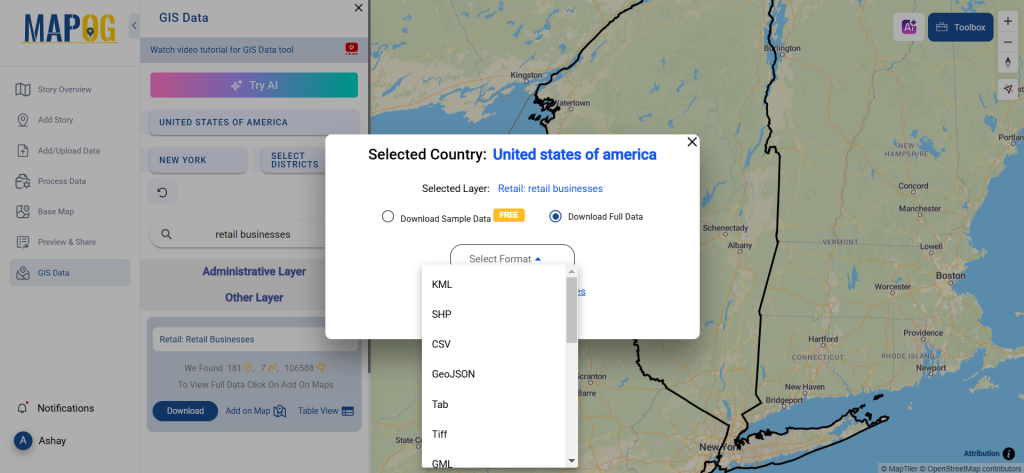
Conclusion
Downloading retail businesses data from GIS Data by MAPOG is quick and efficient. With comprehensive datasets available in multiple GIS formats, users can analyze business locations, plan expansions, and conduct market research with ease. This powerful tool is essential for professionals in retail analysis, urban planning, and location intelligence. Start exploring and download retail businesses data today!
With MAPOG’s versatile toolkit, you can effortlessly upload vector and upload Excel or CSV data, incorporate existing layers, perform polyline splitting, use the converter for various formats, calculate isochrones, and utilize the Export Tool.
For any questions or further assistance, feel free to reach out to us at support@mapog.com. We’re here to help you make the most of your GIS data.
Download Shapefile for the following:
- World Countries Shapefile
- Australia
- Argentina
- Austria
- Belgium
- Brazil
- Canada
- Denmark
- Fiji
- Finland
- Germany
- Greece
- India
- Indonesia
- Ireland
- Italy
- Japan
- Kenya
- Lebanon
- Madagascar
- Malaysia
- Mexico
- Mongolia
- Netherlands
- New Zealand
- Nigeria
- Papua New Guinea
- Philippines
- Poland
- Russia
- Singapore
- South Africa
- South Korea
- Spain
- Switzerland
- Tunisia
- United Kingdom Shapefile
- United States of America
- Vietnam
- Croatia
- Chile
- Norway
- Maldives
- Bhutan
- Colombia
- Libya
- Comoros
- Hungary
- Laos
- Estonia
- Iraq
- Portugal
- Azerbaijan
- Macedonia
- Romania
- Peru
- Marshall Islands
- Slovenia
- Nauru
- Guatemala
- El Salvador
- Afghanistan
- Cyprus
- Syria
- Slovakia
- Luxembourg
- Jordan
- Armenia
- Haiti And Dominican Republic
- Malta
- Djibouti
- East Timor
- Micronesia
- Morocco
- Liberia
- Kosovo
- Isle Of Man
- Paraguay
- Tokelau
- Palau
- Ile De Clipperton
- Mauritius
- Equatorial Guinea
- Tonga
- Myanmar
- Thailand
- New Caledonia
- Niger
- Nicaragua
- Pakistan
- Nepal
- Seychelles
- Democratic Republic of the Congo
- China
- Kenya
- Kyrgyzstan
- Bosnia Herzegovina
- Burkina Faso
- Canary Island
- Togo
- Israel And Palestine
- Algeria
- Suriname
- Angola
- Cape Verde
- Liechtenstein
- Taiwan
- Turkmenistan
- Tuvalu
- Ivory Coast
- Moldova
- Somalia
- Belize
- Swaziland
- Solomon Islands
- North Korea
- Sao Tome And Principe
- Guyana
- Serbia
- Senegal And Gambia
- Faroe Islands
- Guernsey Jersey
- Monaco
- Tajikistan
- Pitcairn
Disclaimer : The GIS data provided for download in this article was initially sourced from OpenStreetMap (OSM) and further modified to enhance its usability. Please note that the original data is licensed under the Open Database License (ODbL) by the OpenStreetMap contributors. While modifications have been made to improve the data, any use, redistribution, or modification of this data must comply with the ODbL license terms. For more information on the ODbL, please visit OpenStreetMap’s License Page.
Here are some blogs you might be interested in:
- Download Airport data in Shapefile, KML , MIf +15 GIS format – Filter and download
- Download Bank Data in Shapefile, KML, GeoJSON, and More – Filter and Download
- Download Railway data in Shapefile, KML, GeojSON +15 GIS format
- Download Farmland Data in Shapefile, KML, GeoJSON, and More – Filter and Download
- Download Pharmacy Data in Shapefile, KML, GeoJSON, and More – Filter and Download
- Download ATM Data in Shapefile, KML, MID +15 GIS Formats Using GIS Data by MAPOG
- Download Road Data in Shapefile, KML, GeoJSON, and 15+ GIS Form
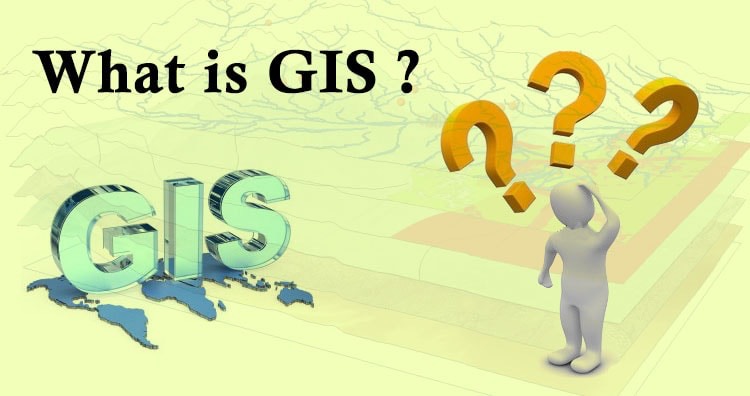 Geographic Information System is a system intends to capture, Store, manage, manipulate, analyze the data.
Geographic Information System is a system intends to capture, Store, manage, manipulate, analyze the data. 